A thousand-mile journey to the edge of Europe
Introduction –
After cancelling Hamburg in April, it was time to plan the first big trip of the year. Whilst originally we would repeat last year’s trip to Prague & Erlangen, we would extend this year’s adventure to Košice, Slovakia.
I’d also purchased a new oxygen system (more on this soon), which would enable 40 hours of endurance, roughly 20.5 hours per person with the EDS system. On a full bottle, this meant we could comfortably fly at the highest levels for the whole trip if needed.
Comfortably the forecast for this whole trip was benign, with the fine and settled weather stretched across Europe since early May. The only notable weather was the heat storms building over the Tatra Mountains and towards Hungary, including a humungous cell well south of our route. But this time we had the endurance of both fuel and oxygen to make massive deviations to get to our final destination, Košice – roughly 76 km (47 miles/40.84 nautical miles) from the nearest city Uzhhorod on the Ukrainian Border.
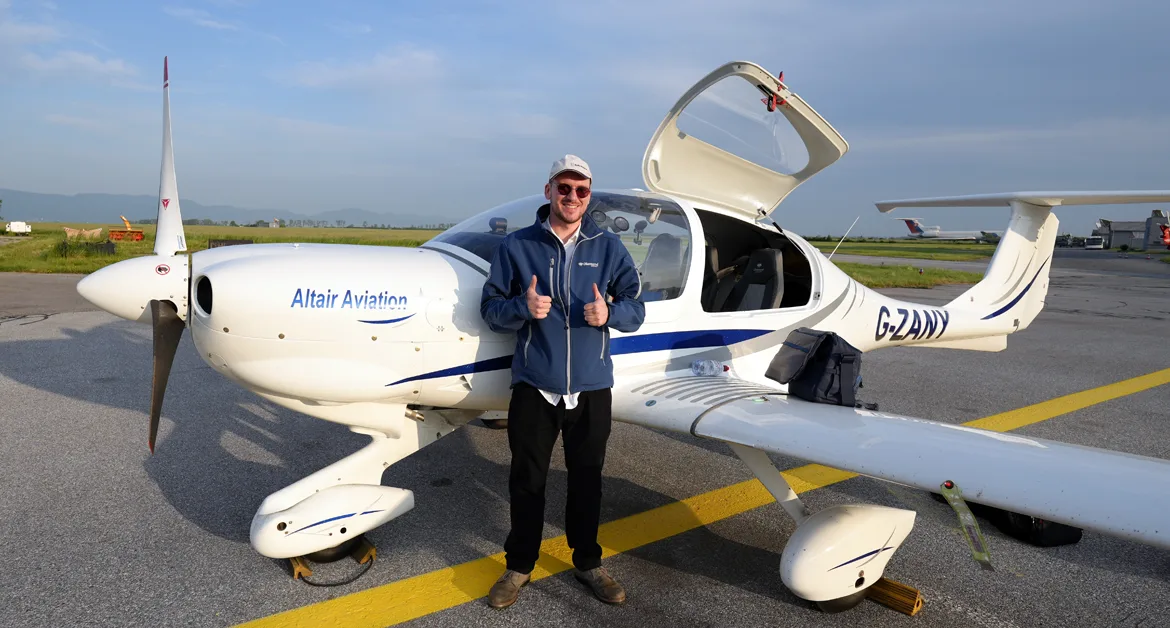
We would fly to Košice for two nights and then spend a further two nights in Erlangen, northwest of Nuremberg – a repeat of last year; cancelling the original plan of staying in Prague for two nights. A visit to the Erlangen Berg is an experience – like Oktoberfest with better weather, the biggest open-air-biergarten in Europe.
The plan –
Whilst the initial plan to fly to Prague and stay for two nights, like last year was desired; we elected to visit Stefan’s hometown, Košice in Slovakia before re-visiting the German festival. This meant I had to check what options were available to get to Košice, with the weather not providing any major issues – the quickest route with a fuel stop was sought, and initially I thought Prague as it’s familiar and has border checks, a somewhat really important aspect if flying long-distance IFR.
The only way we could do Košice direct was a 40-50KT tailwind, highly unlikely given the high pressure over the European Region. The aircraft has a comfortable endurance with sufficient IFR reserves of roughly 5-5.5 hours of flying time, even less if the weather is not so favourable on arrival. Whilst I have pushed the aircraft to 6.5 hours of flying time, the distance direct to Košice with the unfavourable headwind would be beyond the capabilities of the aircraft.
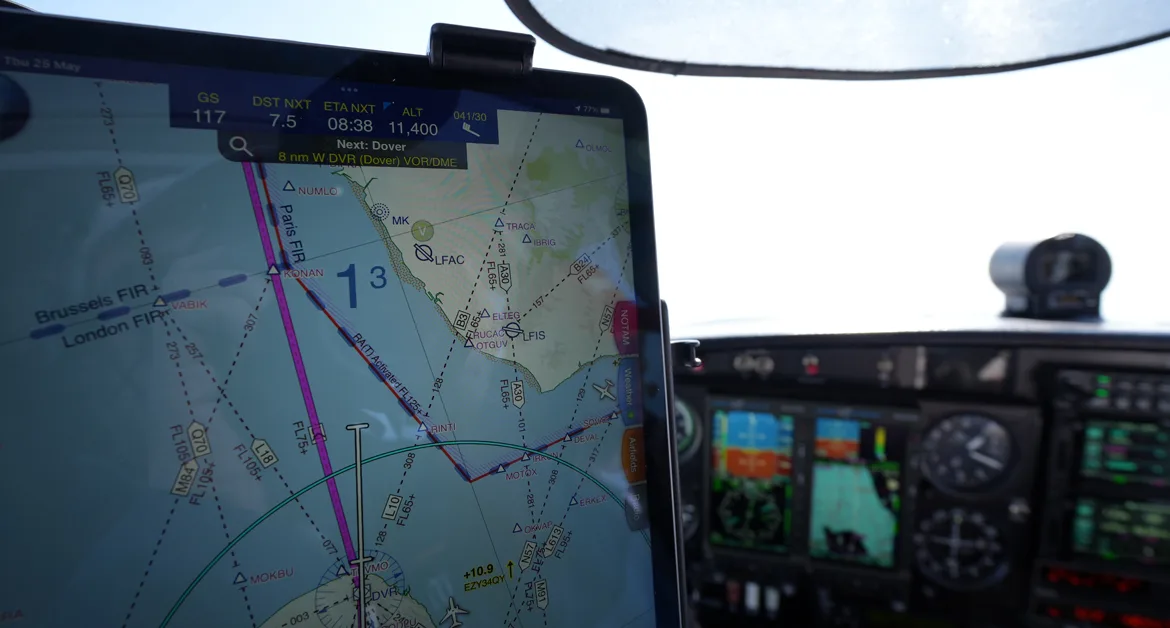
I looked at Leipzig, Dresden and even Vienna but all were not as direct as via Prague (Great Circle Route), so even though Prague has high handling costs – it was more cost-effective to route via LKPR than onto Košice, LZKZ.
Initially, I thought of a stop in Vienna for the route to Nuremberg but elected to fly directly to save costs. The return to London would also be direct rather than fly via Baden Baden, as on a Monday most of the location was shut as we hilariously found out last year.
So the final plan was set, Stapleford to Prague for a fuel stop, then onto Košice for two nights. We would then fly direct to Germany with a stop in Nuremberg, for a two-night stay in Erlangen before the final flight back to the UK.
Airport Choices –
Airport choices are based on a few things for IFR flying, accessibility – customs & police, handling charges not being excessive and a new one, Category A aircraft being accepted at the aerodrome. This is not permitted at airports like Barcelona El Prat, and in some cases, because airports are not allowed to ban, they ban by stealth, in effect charging you excessive fees. Jet A1 availability is not an issue at most major international airports for the aircraft that we fly.
Prague
Like last year, because of the length of the flight and for ease of use, I elected to choose the main airport of Prague, Václav Havel Airport Prague – and also to clear into Schengen and not have a customs stop till the return from Nuremberg on leaving Schengen for the UK. We chose Czech Airlines Handlings again, which was the cheapest of the handlers last year and we received excellent service.
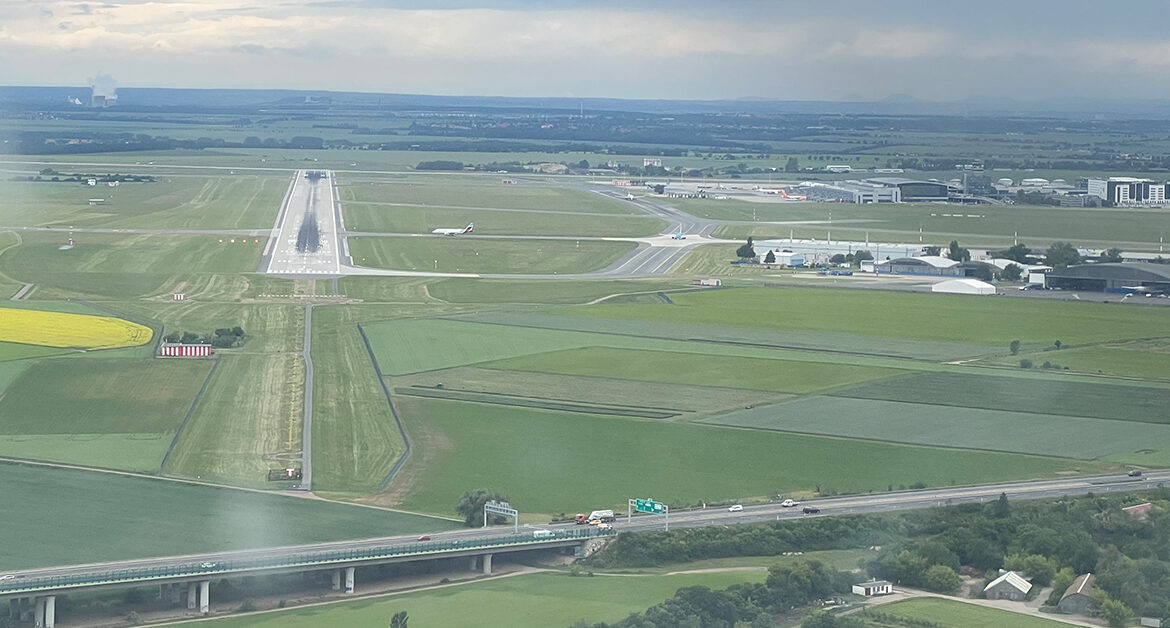
Košice
Košice is the largest city in eastern Slovakia. It is situated on the river Hornád at the eastern reaches of the Slovak Ore Mountains, near the border with Hungary, about 20 kilometres (12 mi), 80 kilometres (50 mi) from the Ukrainian, and 90 kilometres (56 mi) from the Polish borders.
In Košice, there’s only one airport serving and that’s Košice International Airport, the second-largest international airport in Slovakia. It is conveniently located 3.7 miles to the south of St Elisabeth Cathedral. The airport can easily be accessed by car, taxi or bus.
The airport does have an Aeroclub, but due to our late arrival – this would likely be closed on arrival; Aeroklub Košice (aeroklubkosice.sk). We would have General Aviation Services handle us at the main GA parking apron.
Germany
We would need to arrive in Erlangen by air from Košice. There are two reasonable options, the first was IFR – Nuremberg Airport, the second-busiest airport in Bavaria after Munich Airport and the 10th busiest in Germany or the alternative; was Herzogenaurach Airport which was VFR. Unlike Prague or Košice, EDDN did not require pre-arranged handling, as on-site is a GAT which picks you up and processes any fees for you.
Airport Quotations –
Prague
We emailed our previous handler from last year; Czech Airlines Handling, a.s. They quoted us the following, which vs last year is roughly an increase of 25.75 EUR.
Handling basic – 100 EUR
Services incl:
- -pax/crew transport from/to aircraft on the apron
- -luggage transportation to/from the terminal
- -ac conning/chocking
- -wx+notam info
- -slot coordination
- -ATC monitoring
- -Jet A1
- -Immigration services.
Airport Fees:
- Landing fee – 58 EUR
- Parking fee – 2,0 EU/1hrs (parking price depends on assigned parking position)
- DEP PAX – 39 EUR (per 1 PAX)
- Airport Slot – 3 EUR
All prices include 21% VAT for private flights – A noise certificate is required. The initial slot we booked was for 1300UTC arrival with a departure at 1400UTC.
Košice
Because of our arrival time, we would have to use the GAT which was fairly small. We would land here for a few nights and it was pretty expensive for parking, presumably because they had only two stands and we would use one for 48 hours. I couldn’t get to Slovakia any faster than this so this is a problem unless you arrive within the hours of the aeroclub.
Stefan, a fellow IR pilot native of Slovakia managed this aspect of the trip.
Airport Fees:
- Landing charges (Intl traffic): 16,21€ (rates per each tonne of aircraft)
- Passenger service charges – tax: (Intl traffic): 18,69€ (per one departing passenger)
- Parking charges 1,327- EUR (per each hour of parking and tonne (even initiated) (- 1hrs free up to 4 tones – 2hrs free, over 4 tones)
Fuel:
- Airport Košice a.s. provide : Jet A1 fuel price – 1,05986EUR/per one litre
- + Fee for maintenance of emergency crude oil stocks – 0,02965 EUR/L15 per one litre
- Excise tax – 0,481- EUR/l 15 – per one litre
- Value-added tax – 20% from all amount (The proprietors of Air Operation Certificate are exempt from excise tax and value-added tax)
Handling Services:
- 76€
Nuremberg
There were no quotations for EDDN, although like last year – it would be a turn-up and pay. But it’s prudent to check the fees’ before embarking on a trip or check with the GAT.
Airport Charges (airport-nuernberg.de)
GAT – General Aviation Terminal (airport-nuernberg.de)
Accommodation –
We would stay 5-10 minutes drive from the main airport, in Stefan’s family home for two nights. This was also a short, accessible drive or taxi into the centre. Roughly 10-15 minutes, depending on traffic.
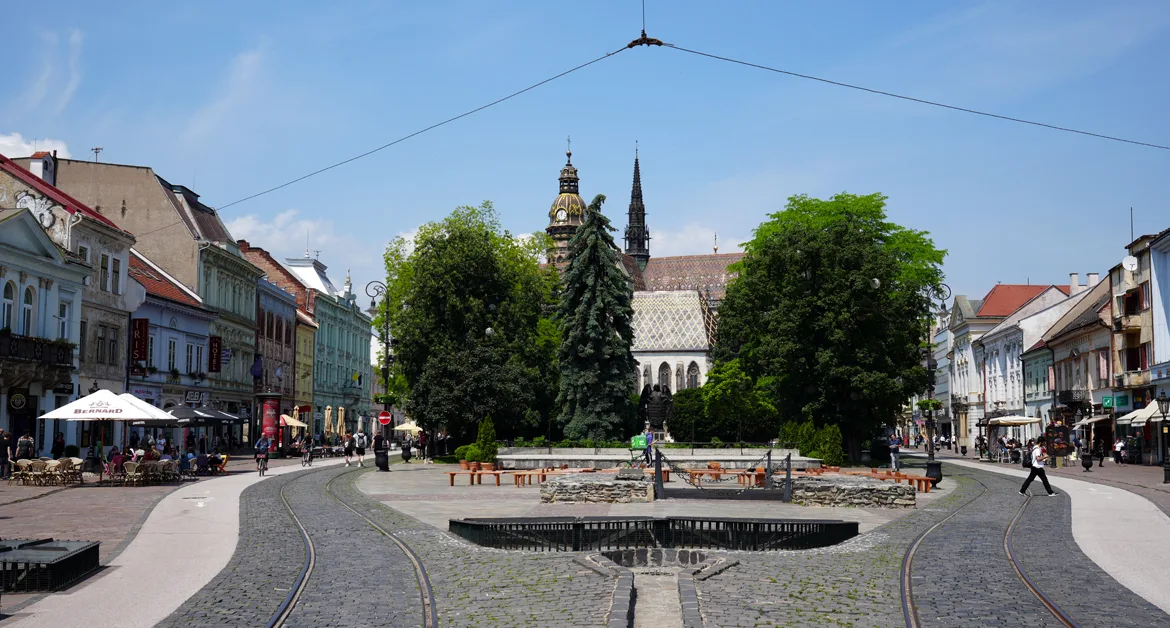
Weather –
The weather forecast for the entire trip was completely benign, especially with high pressure situated close to the UK and elongated across much of Europe. There may be a chance of some heat storms near the Tatra mountains – most likely forced from the wind, but with high pressure in control, the flight could take place in full without any risk of needing to stop due to IFR reserves or major re-routes or deviations from the original plan.
This made a change from the Atlantic dominated weather the UK experienced the proceeding weeks leading up to the generally settled weather.
TAF LKPR 250800Z 2509/2615 34010KT CAVOK=
TAF for Prague & Košice
TAF LZKZ 251115Z 2512/2612 02013KT CAVOK=
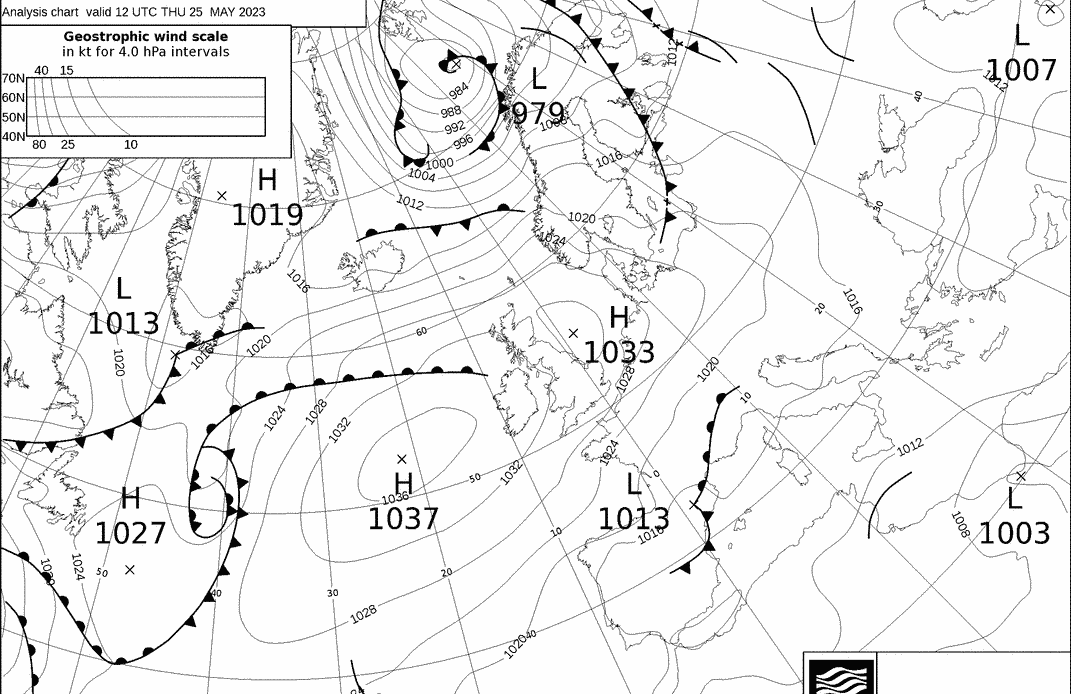
The rarity was that due to the positioning of the weather systems, we would have a tailwind home, but not a very strong one. Weather again was clear and benign, but due to the fairly warm weather and strong sun we would have lots of thermal’s.
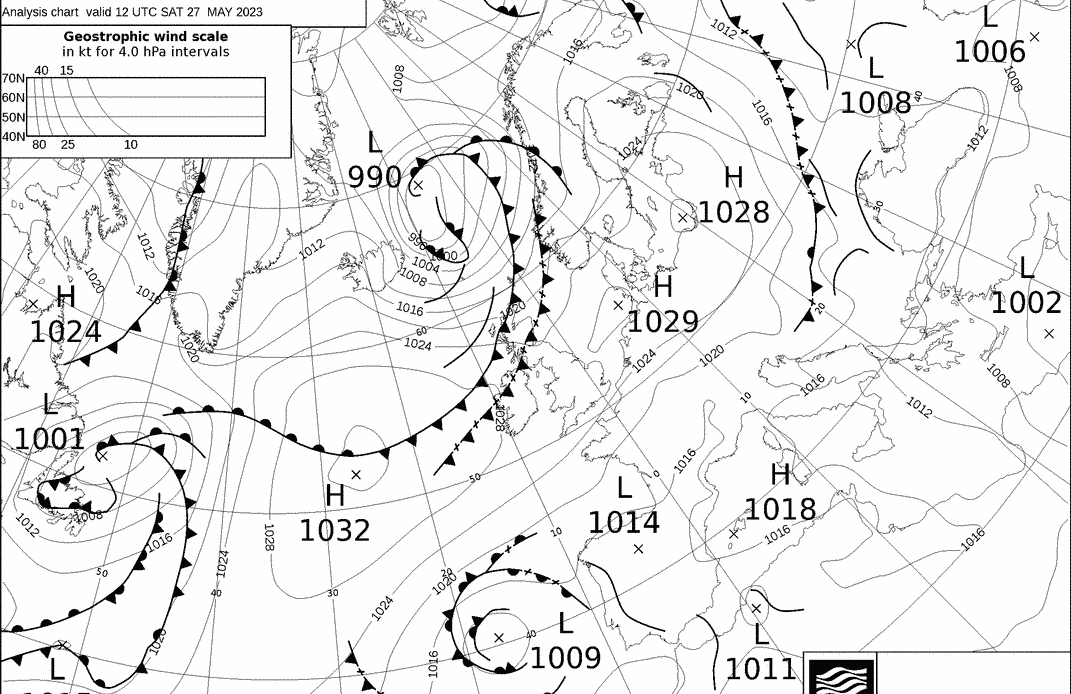
For the flight to Nuremberg, on departure slightly gusty winds were forecast but again, fine and dry weather was the dominating headline. Albeit the gusty winds forecast did not happen when we departed and fairly light winds in a very warm Germany. We had a tailwind for this flight forecast.
TAF LZKZ 270515Z 2706/2806 01015KT CAVOK TEMPO 2706/2718 02016G30KT=
TAF for Košice & Nuremberg
TAF EDDN 271100Z 2712/2812 07008KT CAVOK BECMG 2721/2723 VRB02KT BECMG 2807/2809 04006KT=
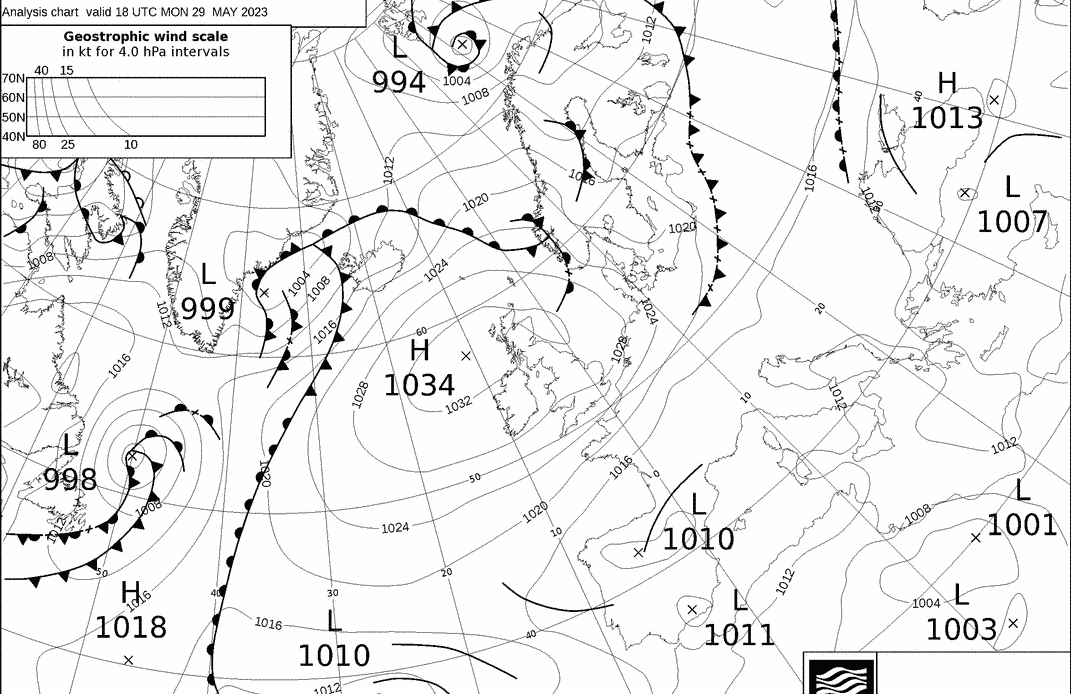
The flight home would also have a tailwind, with decent weather forecast for the long-sector back to the UK. With the forecast weather this flight was possible direct, unlike the previous year where we stopped for food and some fuel.
TAF EDDN 291100Z 2912/3012 03008KT CAVOK BECMG 2921/2923 VRB03KT BECMG 3006/3008 03008KT=
TAF for Nuremberg & London City
TAF EGLC 291357Z 2915/2921 06012KT 9999 SCT030 PROB30 TEMPO 2915/2920 05015G25KT=
Flight to Prague –
We arrived at the aircraft nice and early, just before 8 am. I had already fitted most of my equipment the day before, including the setup of my new oxygen system and recording equipment, to save time and allow for an on-time departure.
We had planned a 0750z departure to allow for a 1300z landing into Prague – this would mean a landing into Košice, well before sunset, which would mean an IFR flight into a mountainous terrain in daylight rather than at night. Somewhat risky in a single-engine aircraft with summer thunderstorms often forecast into the evenings.
By 08:15 local we were refilling the aircraft with fuel in preparation for the flight to Prague, we would fill the tanks to almost full (140 or so litres) to enable an endurance of roughly 7 hours, plenty for an unremarkable flight forecast to Prague.
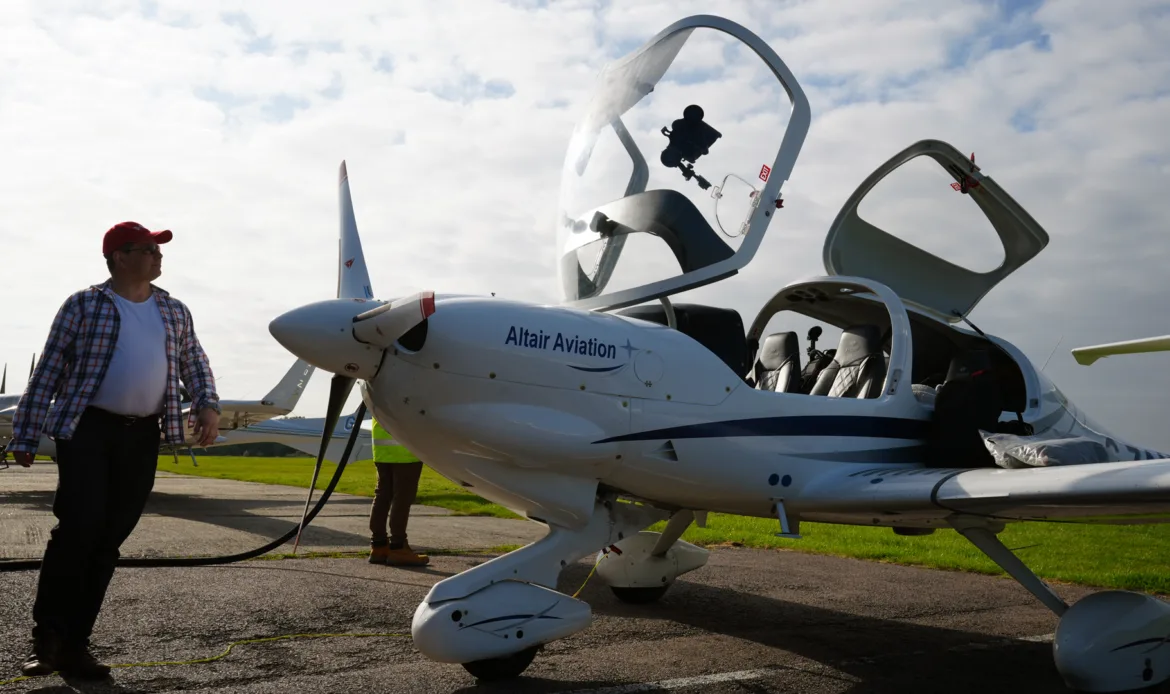
After a quick human pitstop, we both boarded the aircraft, and with the flight plans already loaded from the day before we proceeded to prepare the aircraft panel for departure including any necessary IFR checks related to the task ahead of us. Once this was completed, we got our ATC clearance release from Stapleford who had phoned London for us on our way to the aircraft.
Sadly at this point, I’d simply forgotten to press the “Record” button on the ATC audio recorder, something I’ve not done in a very long time (Flight back from Liverpool) – and this was highly frustrating as it meant losing almost 60% of the flight, roughly abeam Frankfurt.
We taxied to Runway 03L for our departure, ensuring all checks were completed and in good time. We taxied up to the far end of the airfield, which meant we would likely be a few minutes later than planned to get airborne, as the longer taxi time.
We lined up and departed for the sharp right-hand turn towards the DETLING VOR, carefully following the slight right turn for noise abatement after departure before tracking the VOR to the southeast. Due to a few conflicts within the London TMA, and some departures from London City I believe, we were prevented from climbing for a fair while. It wasn’t long though and we would start climbing up to our initial cruise level of FL110 – due to headwinds.
It was relatively clear with some light cloud below us for the majority of the cruise, these headwinds were fairly frustrating though – meaning this flight would take about 5 hours vs 4 that we achieved last year to Prague. We had a planned step climb at the Olno VOR (LNO) to FL150, just southeast of Liege and this was because of stronger winds forecast till that point, with less headwind as we flew further on. This was very tactical to achieve a bit of a saving on the flight time to keep to our SLOT into Prague.
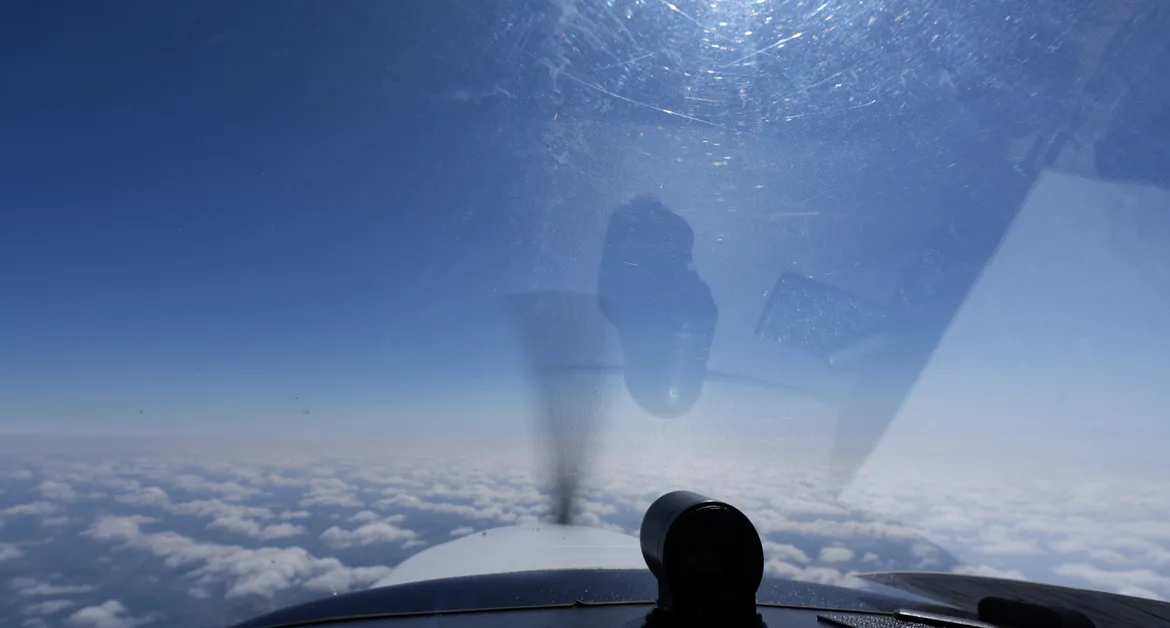
As we climbed up we noted that the wind was as forecast, to be slightly less but not as great as forecast but we were still predicted to land at our slot and within tolerance. It’s becoming frustrating, always having headwinds and next to no tailwinds. One day I’m sure I’ll have a strong tailwind both ways on a trip.
Interestingly the turn at LNO wasn’t as planned and it was only when filling did I see that the route was no longer permitted due to Military Activity which was highly frustrating as I’d prepared all my paperwork and routes, but quickly reprinting didn’t take long. This meant 15 minutes extra flight time.
A short whilst later, to my horror I discovered that the audio recorder had quit or not recorded properly, It was very frustrating but I’d summarised with Stefan how I’d edit this trip and future trip blogs and that I’d had already flown this route on a recent vlog with him, it would be easier to create a different style of vlog.
We passed Frankfurt at FL150 and both were in awe at how clear the weather was, but to let us not slip complacency in we did our usual approach brief, this time the more improved version compared to the previous time this sector was flown.
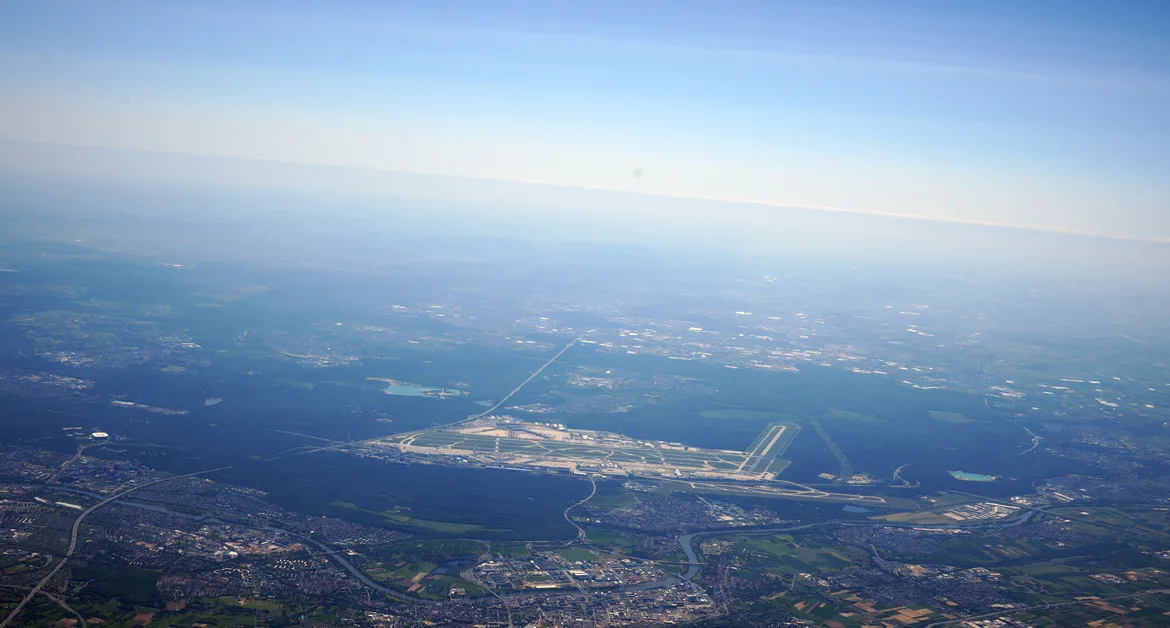
The previous year the NOTAMS stated that the longest runway would be closed, and for whatever reason I must have autonomously misread that it was still closed, but it was the other runway; which we coincidentally landed on last year. So we brief for Runway 30 – which it would have been easier to gauge if I had read the NOTAMs properly. The other alternative was it didn’t update properly, as of writing I’m not sure.
As we approached the Czech border we could pick up the ATIS and after a few handoffs from Langen Radar and Munich, we were with Czech ATC and to our surprise the Runway in use was 06. But having quickly retrieved the latest info for Prague Airport, we reprogrammed the GTN650 XI with the new arrival and re-briefed. This would bring the arrival time down to some 10-15 minutes earlier than predicted.
We could now work out when we would need to start our descent into Ruzyne and request descent. Initially given FL140 probably as we requested it too early. If given a descent by a specific point, I could work out relatively easily what rate of descent we would need and adjust as with the Aspen it will give a small semi-circle to show when you would likely achieve that level or altitude based on various factors.
We were then given a further shortcut to PR 742 which is conveniently located on the ILS approach which we were cleared for. As we got further down and I had kept the speed up we did get some fairly lumpy interludes, but this seemed okay to fly in the yellow arc. I think anything more, I’d have substantially reduced to less than 129 KIAS as it is pretty rough, for clear air.
It was a fairly warm late Spring day on the landlocked part of the continent so this would be expected, and we were landing at peak heating. As we descended with the ILS, the air did smooth as we proceeded with flying the rather unusual 140 knots indicated till 4DME to assist ATC with its flow of traffic as the airport seemed busy with one aircraft well ahead of us and others departing between the gaps of arrivals.
I then queried with ATC where they wanted us to vacate, as Prague is a fairly complicated airport with multiple runways – we were informed to aim for the rapid exit, Lima – which is roughly 1/3rd the way down the runway.
We then made the rather long two-mile taxi to the South Apron where we would be handled by Czech Airlines Handling, clearing customs and refuelling for the second sector of the day to Slovakia. Interestingly when we last visited we parked on the old runway – this time we appeared to have parked nearer the GA terminal.
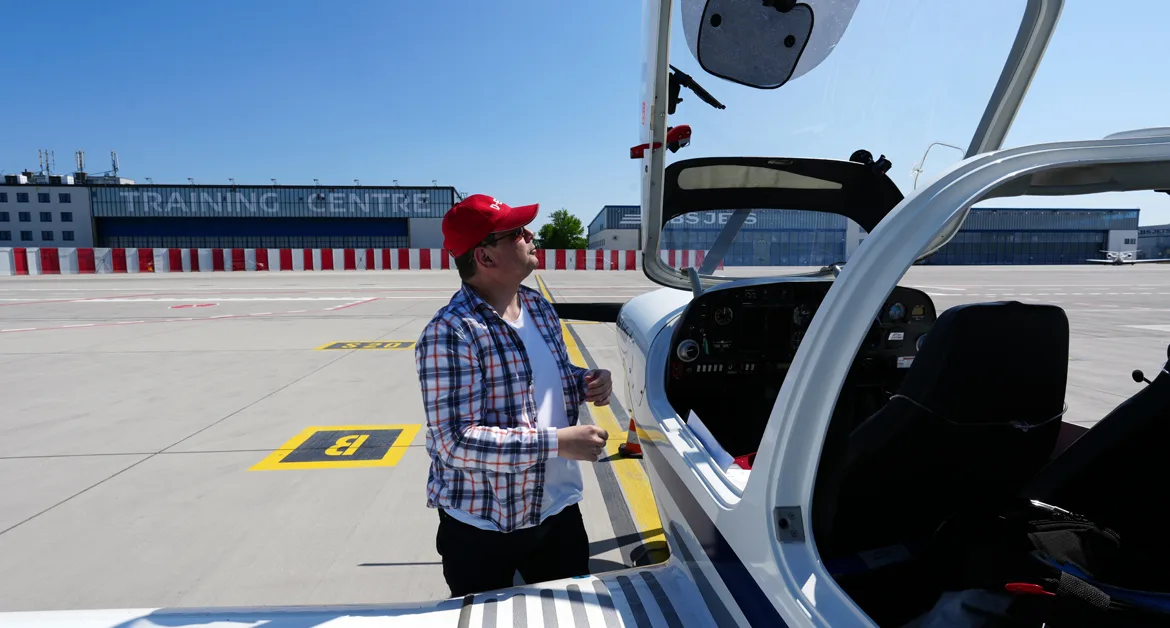
The last time we visited, it was mostly a building site and lots of stuff was under re-construction with the handling team in a portable cabin. This time they had a proper office in a newly reconstructed terminal building for GA (Terminal 3), which by the CEO giving some partners a tour – appeared to be a very new reopening.
We were escorted from the aircraft to the terminal, where we would refresh – clear customs and immigration then have to re-route back through security to enter the airport to fly to Košice. This was also a very good opportunity to finally stretch our legs.
We had roughly 1 hour between landing and departing again, so whilst this was enough – it did seem a little rushed and everything had to run like clockwork. Probably in the future, the best option would be to have at least 90 minutes before departing to onward destinations to counteract any delays that may be encountered – especially if clearing Schengen and wanting to then operate further afield.
ATC Flight plan and route flown –
Refiled route due to CFMU validation
N0130F150 DET L6 DVR L9 KONAN L607 LNO DCT SOPOK DCT ETENO Y863 ROPUV L607 UBIDU L984 SULUS Z650 TONSU Z35 ODOMO DCT LOMKI
Filed ATC flight plan for EGSG-LKPR – CFMU Re-Route due to Military Restriction
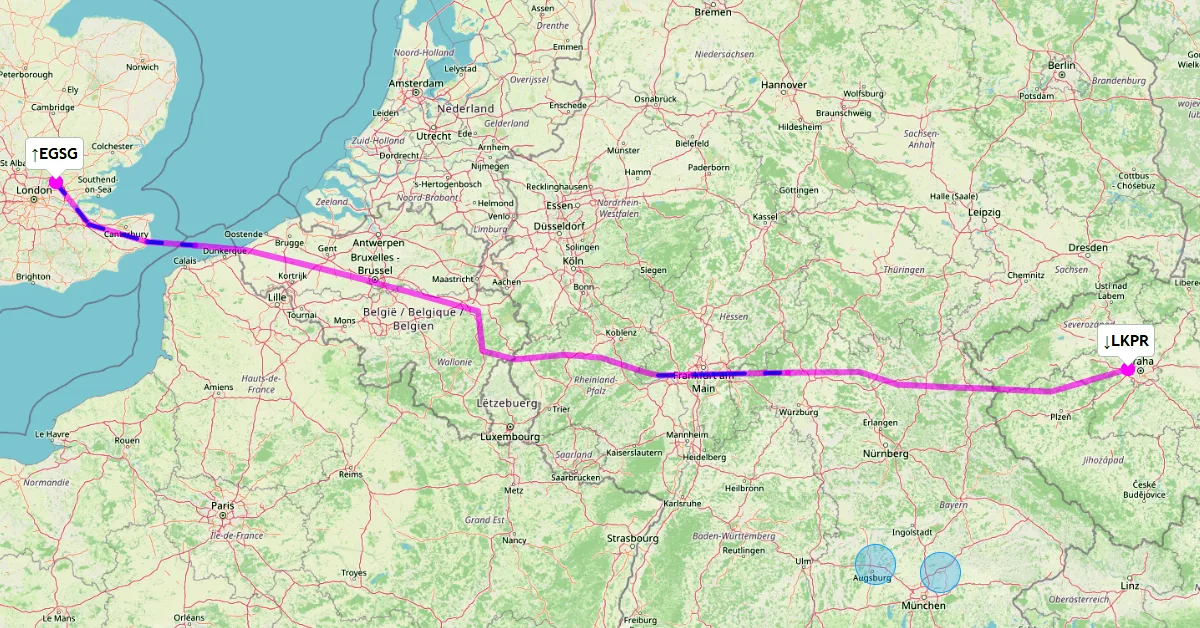
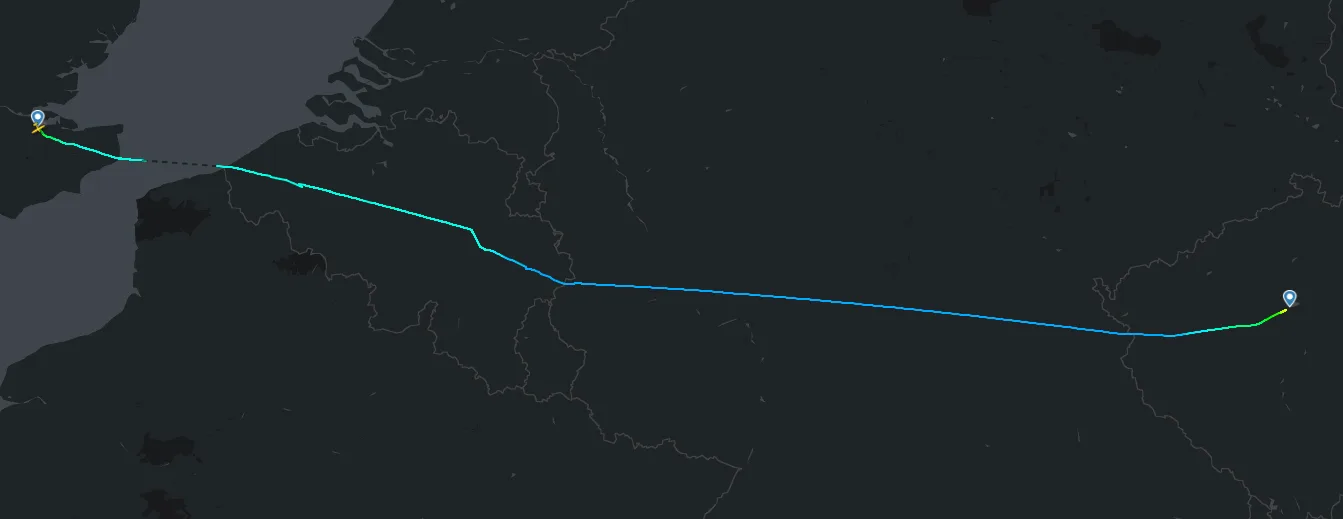
Initial planned Route on 23-MAY-23
N0128F150 DET L6 DVR L9 KONAN L607 ROPUV/N0128F140 L607 UBIDU L984 OSBIT/N0129F130 L984 SULUS Z650 TONSU/N0128F110 Z35 ODOMO/N0126F110 DCT LOMKI LOMKI7P
Initially planned route to Prague
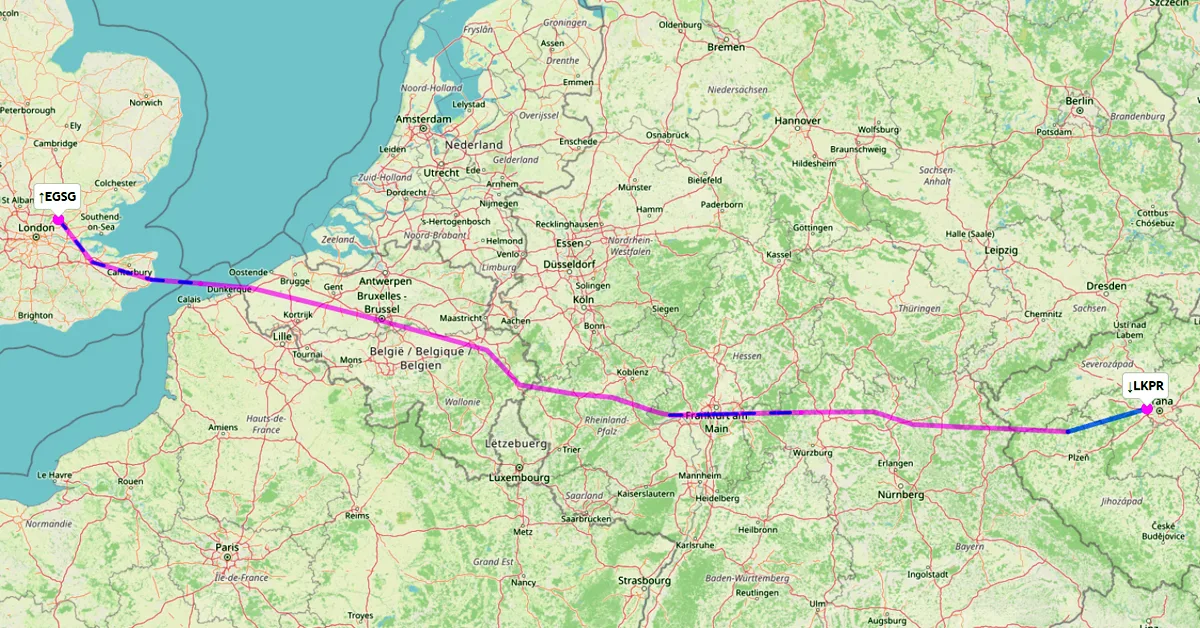
Final Fees for Prague Airport –
Arrived from the UK – London – Stapleford (EGSG) – Departed to Slovakia, Košice (LZKZ)
- BASIC – 2,395.80 CZK
- Landing Charges – 1,343.10 CZK
- Parking Charges – 37,70 CZK
- Slot Coord Fee – 19.,04 CZK
- Total 3,805,64 CZK (£140.08)
- JetA1 – 4,641.98 CZK for 113 Litres – £170.87
Flight to Košice –
It was a very speedy service from Czech Airlines Handling. Handler seemed new and he did explain he’d never handled a GA aircraft like this before, so he was very attentive. Managed to turn the aircraft around in an hour and clear customs. The new terminal building is efficient but very annoying to have to go through security after pointlessly walking out of the building to otherwise just walk back in.
We headed back to the aircraft, eagerly awaiting the Jet A1 (Which from memory serves correctly, was busy fuelling up the bigger jets in the GA parking area). This was a relatively quick refuel of both wings, filling up 113 litres. This next bit was a little frustrating, as the fuel started squirting out – because of the refueler’s high pressure and didn’t see it fast approaching the top of the tank.
The handler called, and within a few minutes – multiple fire trucks attended to clean up the spillage. Not sure that was meant to happen, but at least they were efficient here.
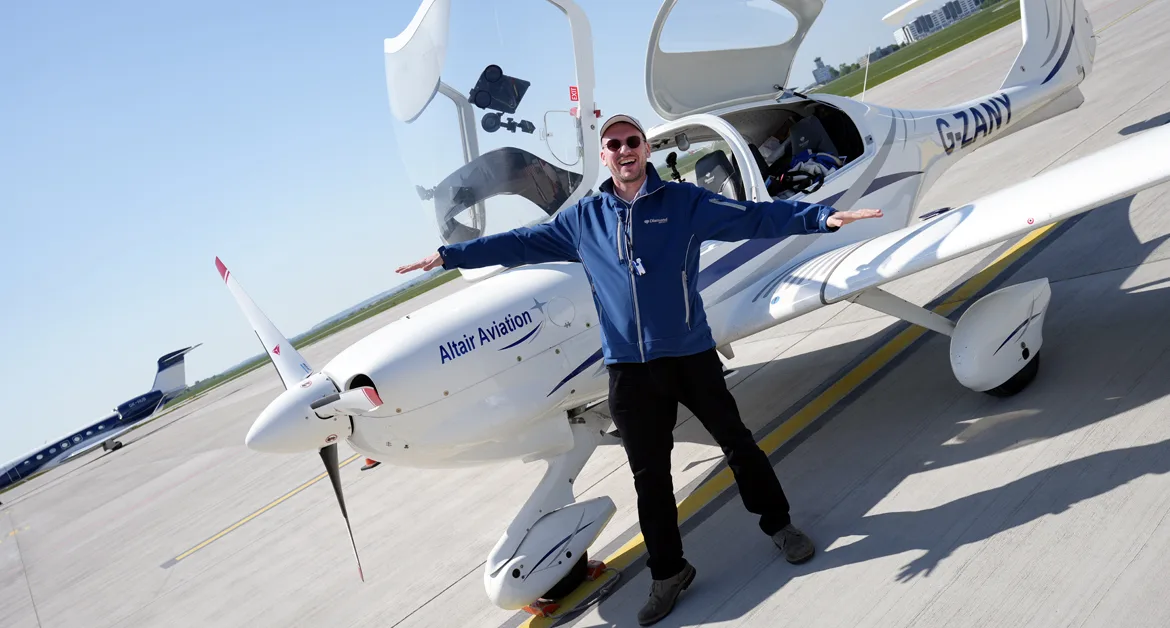
We sat in the aircraft, got the ATIS, checked for clearance just before our departure time and checked with the handler if he was happy for us to request start-up. I wouldn’t normally do this, but with multiple fire trucks pointing at me and in the way of my taxi out. I thought it would be prudent to double-check.
Once we had started, completed all the appropriate checks and prepared the aircraft for the next sector, we called for taxi and were given the all-clear to proceed out of the stand by the handler/fire crew to taxi towards the runway we had landed on just over an hour ago.
We were instructed to taxi to an intersection for our departure, but it was still a long taxi from parking to the longer Prague Runway. As soon as we had done our power checks, we taxied to the hold, contacted the tower and were given a line-up and cleared for take-off.
We were airborne only 1 minute after our CTOT. Not bad considering the amount of stuff we had to do before departing to our destination, but as soon as we were on our way we started making fairly good progress.
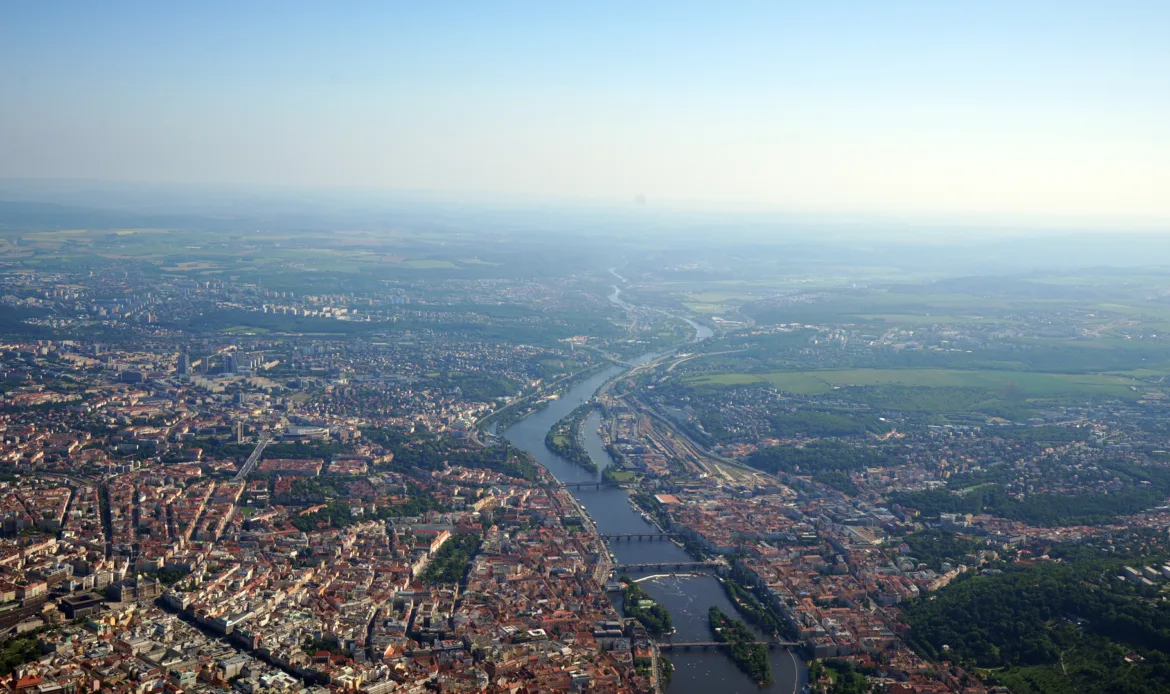
ATC gave us a heading once we made our right turn as per the SID, climbing initially up to FL140. As we approached FL100 the oxygen system came on, but did not work for Stefan. It was a different box, as we had been sent the wrong system that we had ordered – but I believe this was due to the nasal cannula feeling blocked (Stefan had allergies) and thus it stopped supplying oxygen.
We requested with ATC to level off at FL110, but quickly found a fix (albeit it gave us issues for the rest of the flight) and then climbed up to FL140 and then further to FL150. We then started to look ahead at the weather radar and could sense some storms brewing on our route.
Having a good look at the Golze, things were moving south but anything that built meant we would have to go around it, probably well to the north of our routing. But things were not certain, as we were too far away. But the chart did expect some Cb (Cumulonimbus) in the late afternoon forming.
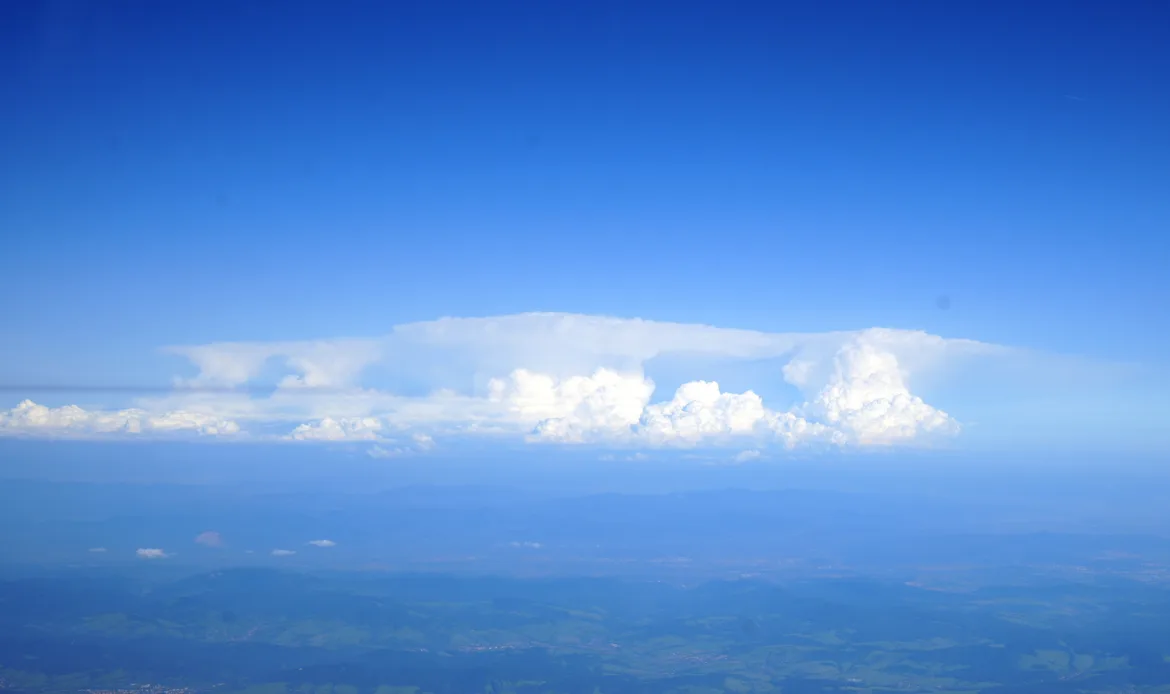
These were likely heat storms, rather than anything frontal, so at least we knew they’d be somewhat isolated. It was at this point, with very much open airspace and a fairly quiet frequency I had the perfect opportunity to put the Bose ProFlight 2 to good use and listen to some music, and of course my favourite; Trance.
We would occasionally check the weather, one of our en-route alternates was a lowish cloud but okay for our aircraft. We would monitor the progress very quickly, and because of the very long day and tiredness would start seeping in now, 6-7 hours in the air we would need some snacks.
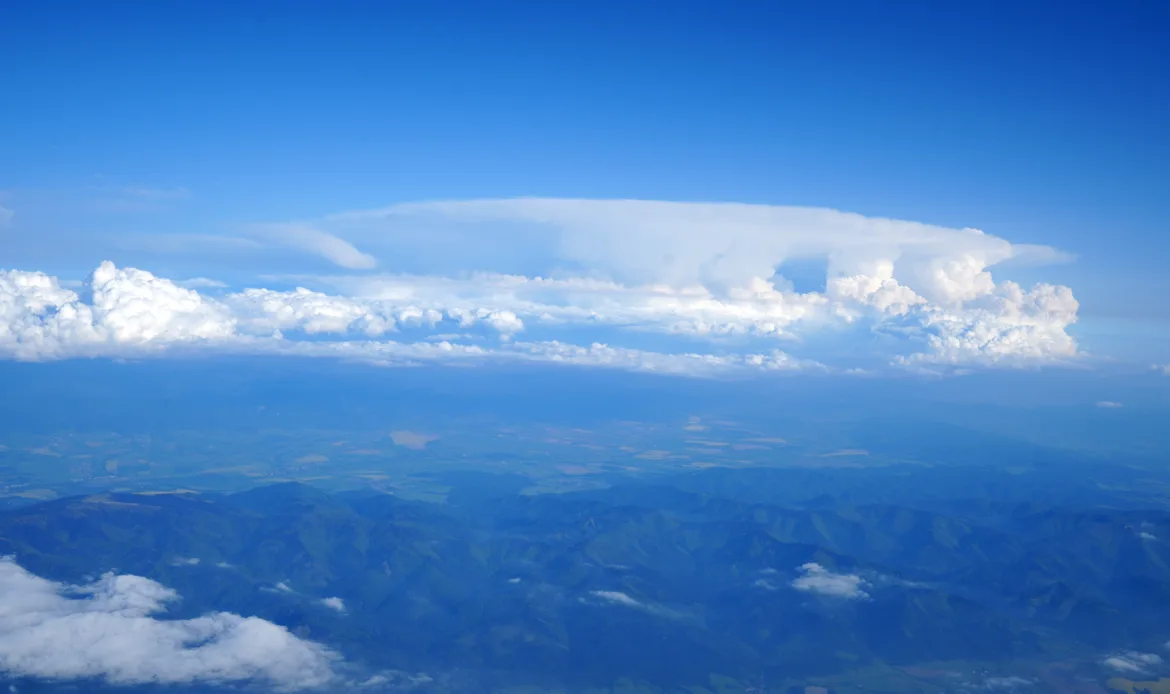
I highly recommend a banana, sugary sweets if you prefer, but nothing beats a banana for in-flight snacks – also a Mars bar or Snickers. A new good one that my instructor taught me recently was Grapes. This softens the blow for needing water and fluids because they go a long way to moistening the mouth – something I now use on longer summer flights.
Due to the fairly clear and stable weather, we could plan our arrival – which would be a right turn after Tatry and land on Runway 01, the northerly facing runway.
The terrain coming into view was starting to change quite notably, something you notice as you pass from Germany into the Czech Republic. We could also see a massive storm to our right-hand side, with airliners needing a fair amount of mileage to deviate, something was also building ahead of us but as we turned left and headed towards the Tatras which started to come into view, just – we needed no deviation and only encountered light chelp from a cell that was starting to develop an anvil and tower well above us.
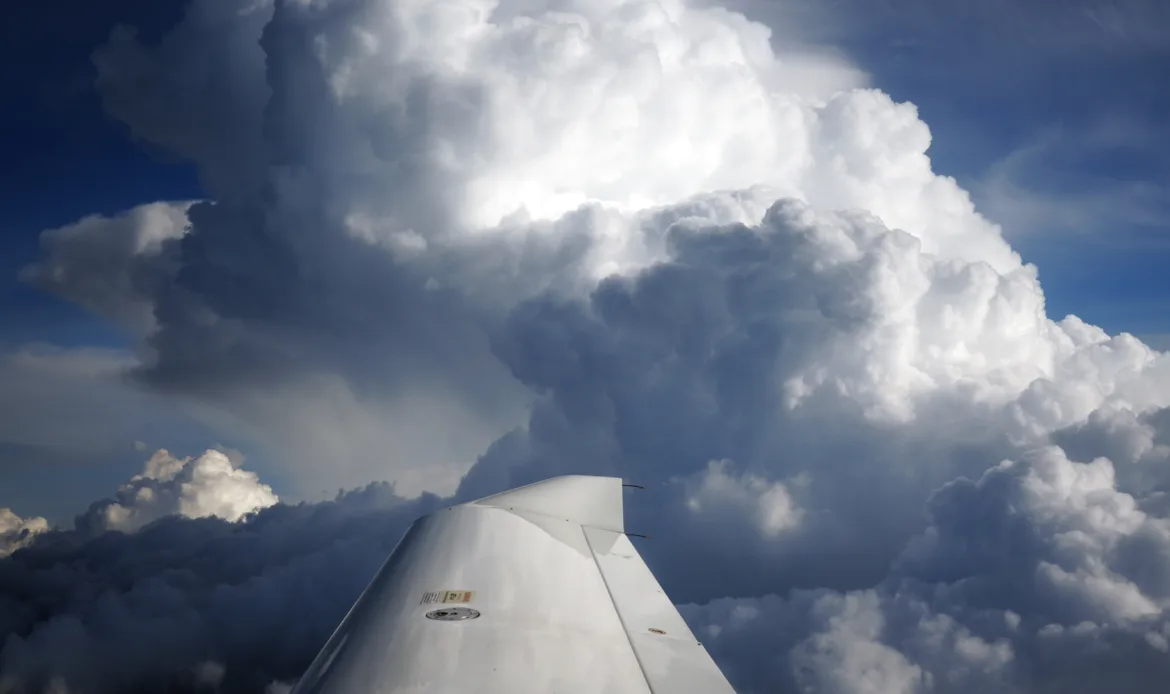
Whilst beautiful, it was a shame that we could not see much of the high Tatras due to the cloud coming off the mountains, adding to my suspicions it would likely be very bumpy – fortunately the light chop was just from the cell, and not the wind coming north across the mountain range, although it may have been.
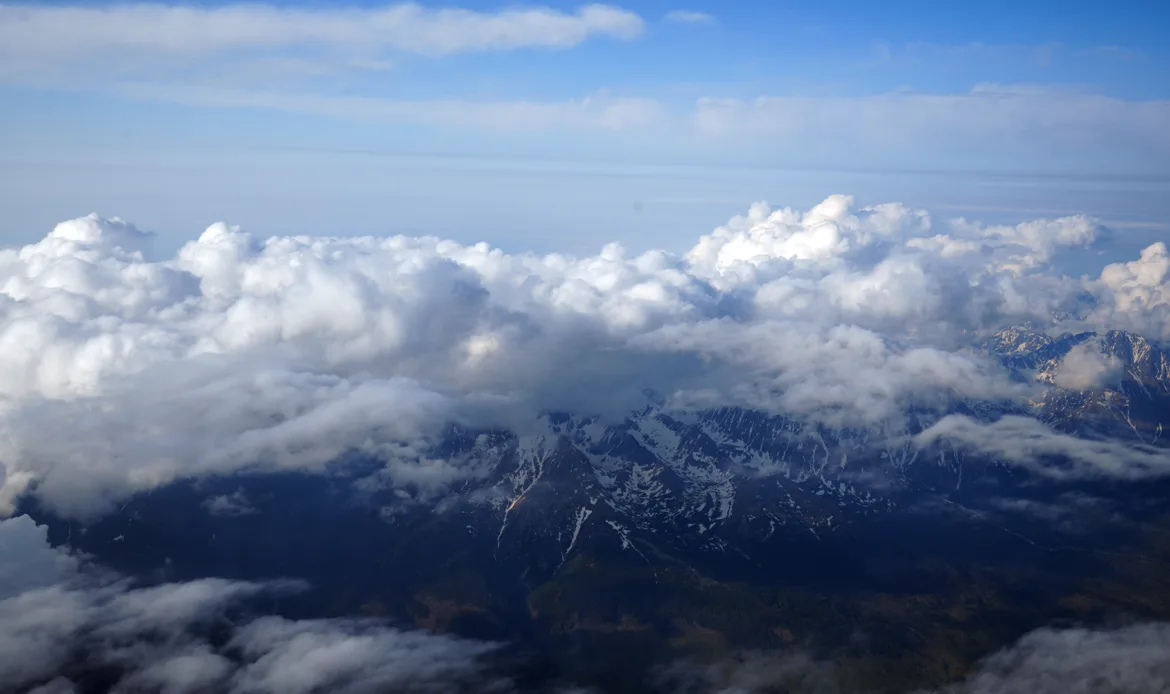
It was not long after, we started to pick up the ATIS and re-brief for the confirmed runway, which was the same; so we requested descent with ATC and slowly began a descent into Košice, again the frequency was remarkably quiet.
It was a bit windy, as we briefed – being located in a bit of a valley surrounded by high ground but a fairly straightforward RNP approach into Runway 01 as I wanted to do something other than an ILS. A Wizz Air was taxiing out as we landed, watching me complete almost 1000 miles of flying with a greaser, who commented on the excellent landing.
After 7 hours 45 minutes of flight time, 8 hours 45 minutes after we had left the UK, we had arrived at our destination. We vacated runway 01, and after a short taxi began the two minutes cooldown to park on one of only two stands available at the airport for GA.
We then began the short process of tidying the aircraft, taking all the equipment for recording away to our accommodation for the end of the week. Ensured the oxygen system was off, secured all of the aircraft in case of damage from wind and then choked the aircraft for the next 48 hours.
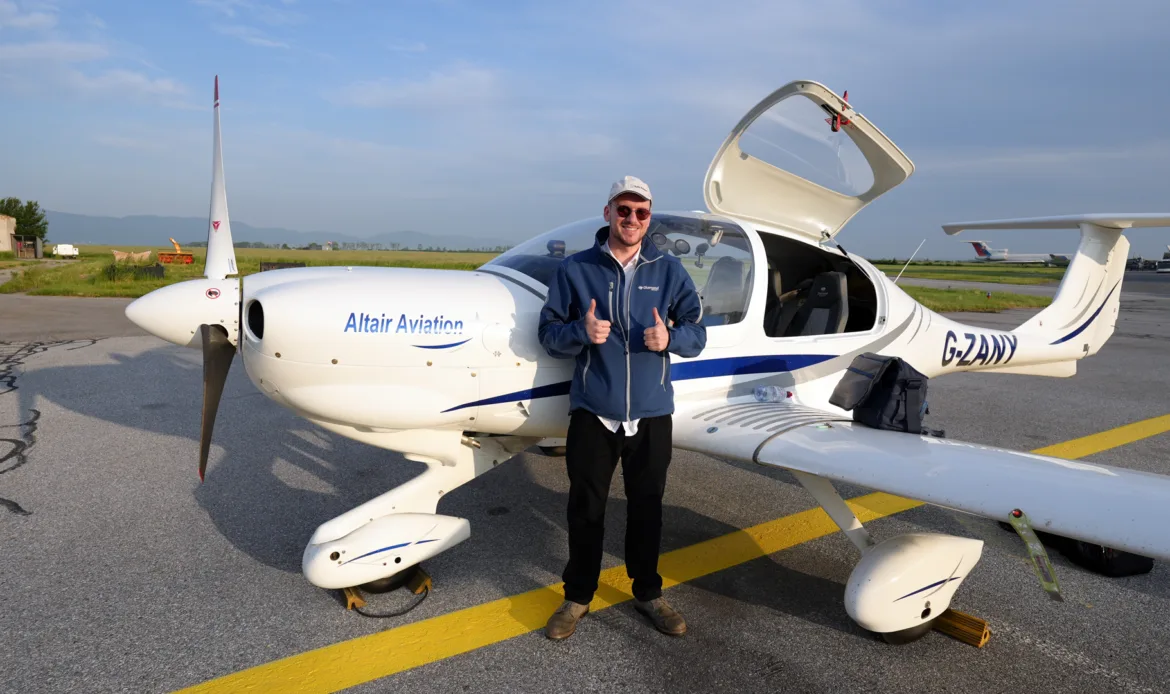
We did not need any immigration control, as we as arriving from the Czech Republic which is part of the Schengen region. However, the GAT website notes that passport control is provided by the Košice Border Police. Customs control of foreign transport is provided by the Customs Office, Košice Airport. Security checks of passengers and crew are provided by the Security Control Department.
Once the cover was on, we walked to the GAT and met Stefan’s family who would drive us to his family home for dinner. A well-deserved beer and warm food was a warm welcome to Slovakia.
ATC Flight plan and route flown –
N0130F150 VOZ DCT LIKSA DCT MAKAL P27 PPD R232 MARKA/N0126F150
Filed ATC flight plan for LKPR-LZKZ
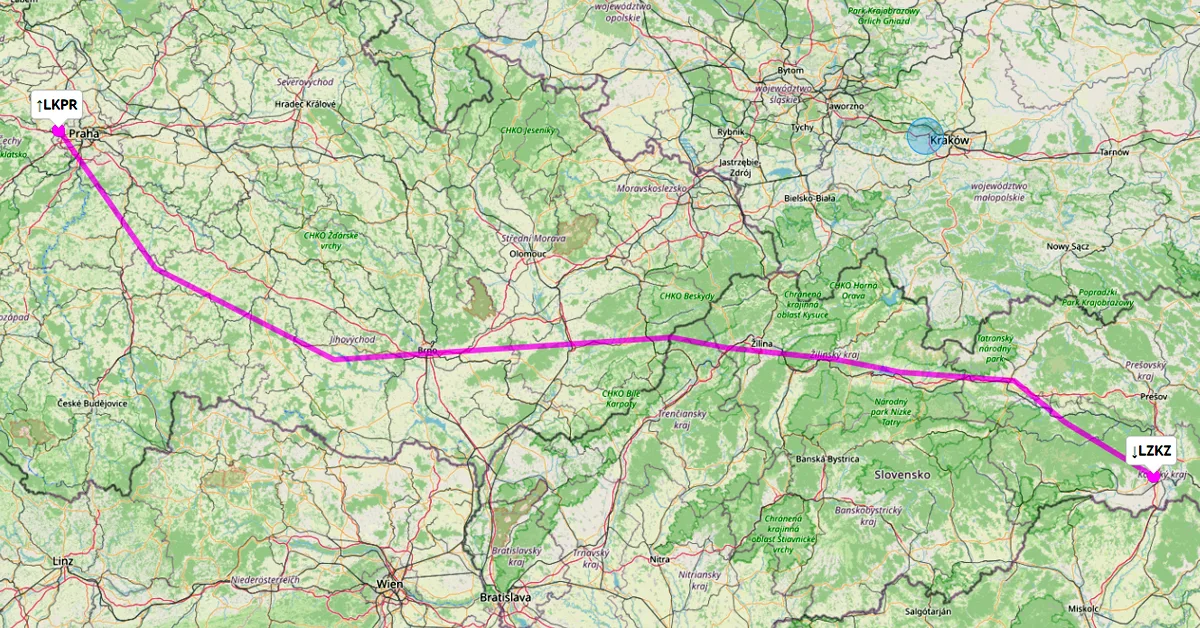
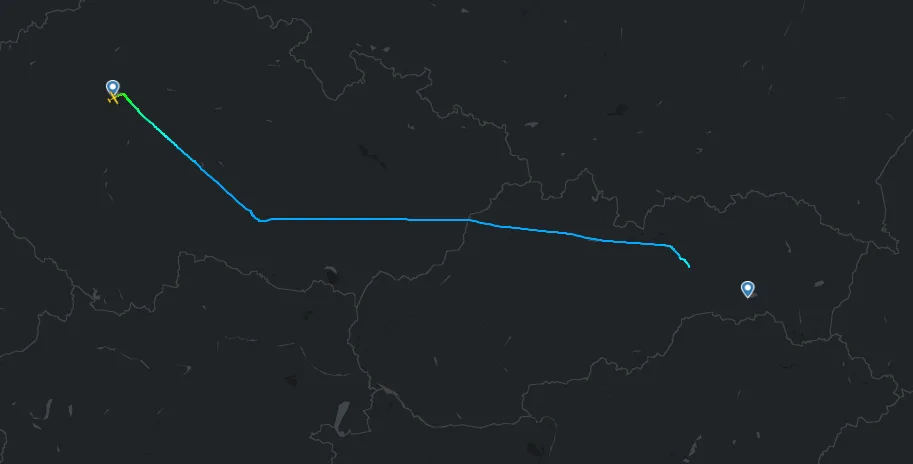
Two nights in Slovakia –
We arrived at Stefan’s family home, roughly just under an hour after we had landed at the airport. Not bad considering we had to tidy the aircraft and decant all the cameras so we could charge, format the SD cards and change over for the flight home.
Stefan introduced me to the rest of his family and we had a style of soup with bread (Known as Hungarian Sauerkraut “Hangover” Soup), and for the mains Porkolt with rice, much needed after a very long day. This was pretty warming and perfect to keep us going till we went to bed.
Whilst I wanted to walk to town, Stefan said this would take absolutely ages but we could stretch our legs when we arrived via taxi. When we arrived at the city centre, we walked mostly on the Hlavná ulica, which is the central street of Košice. The most important historical monuments of Košice are located on it. The southern end of the street ends at Liberators Square, and the northern end is at Marathon Peace Square.
We also walked Mäsiarska ulica, which runs in a north-south direction in the western part of the medieval old town parallel to Main Street. Initially, the street was inhabited mainly by members of the guild of local butchers.
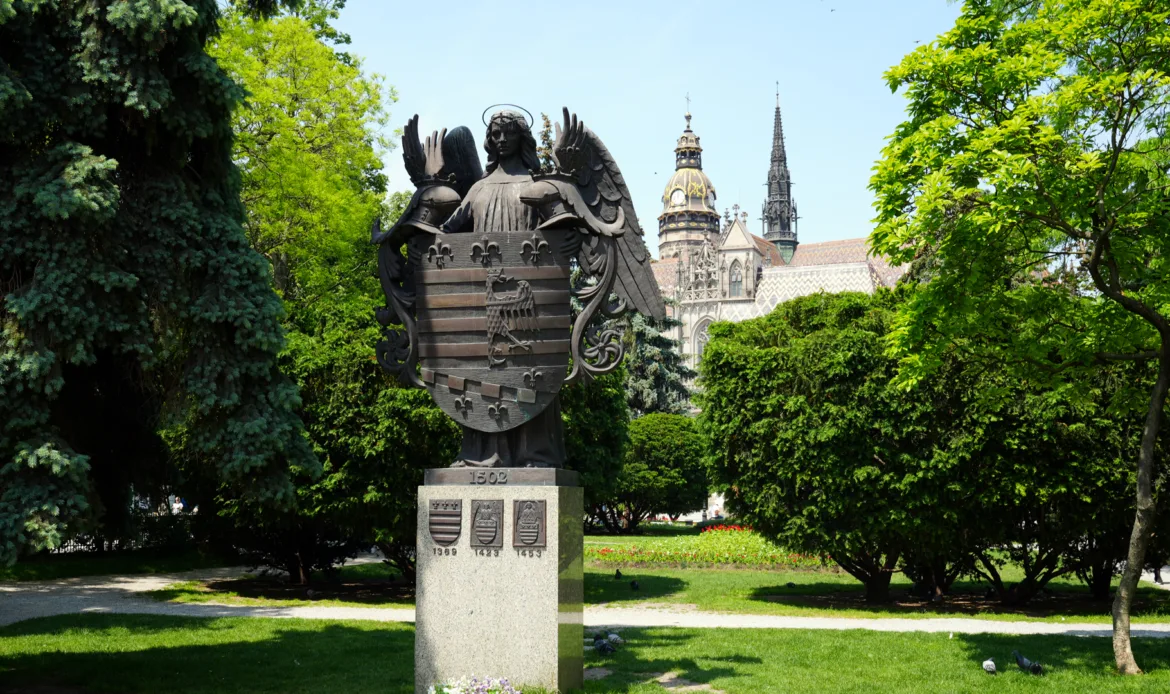
We ended our long walk with some drinks and some more food of the local variety in The Beer House, located conveniently on Hlavná – it’s open till 2 am most nights so is convenient for food and drinks when you’ve arrived from a long day of flying.
As we were both extremely exhausted by this point, we headed back for a good night’s sleep. We had a breakfast of a selection of hams, boiled egg, salad and fresh bread – this was also accompanied by a fresh juice made by Stefan’s niece.
After lunchtime we headed into the Old Town, to visit the Cathedral of St. Elizabeth, the largest church in Slovakia and one of the easternmost Gothic cathedrals in Europe. This is where we climbed Sigismund’s Tower for a view of Košice and further beyond, which has 160 steps and is 59.7 metres (196 ft) tall, so this was a bit of a climb.
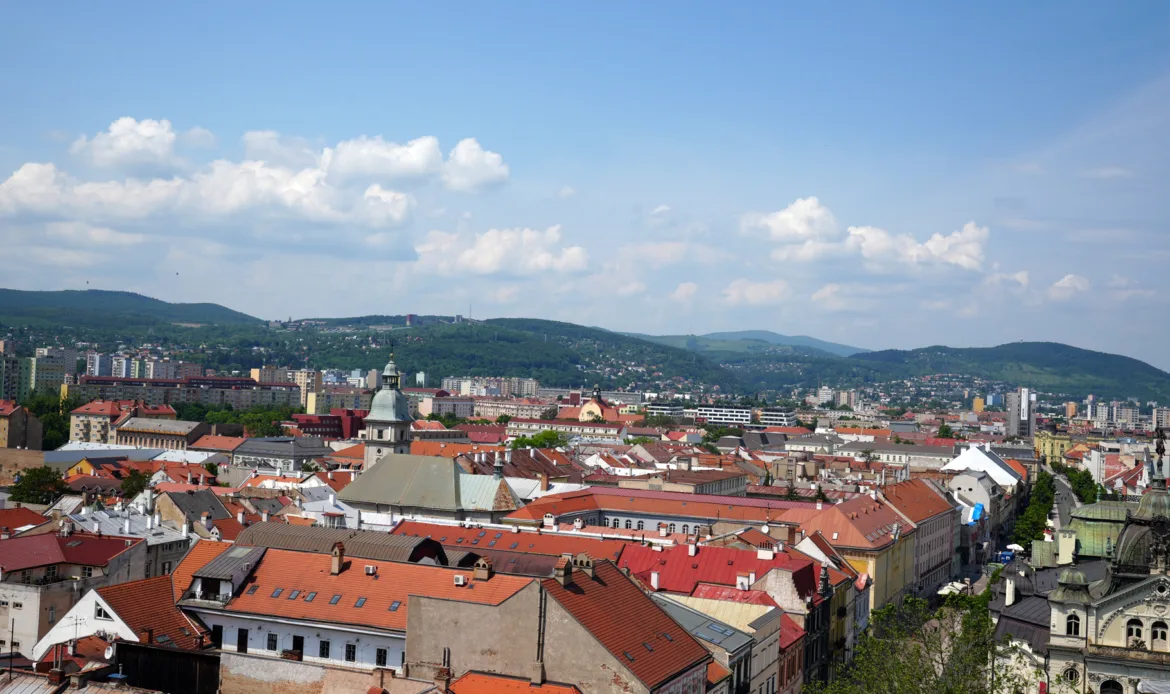
Especially after spiralling the narrow stone steps the reward from the lookout is dramatic. Even catching an A400M – Military aircraft on the climb out from the airport in the distance.
At this point we were hungry & conveniently thirsty so elected to enjoy the mid-afternoon sun and sit in the beer garden on the main street at Central pub & restaurant: Úvod. The location has good reviews for food and drink, although this time we got mostly snack food such as Chicken Wings and onion rings.
We decided to have a late afternoon ice cream and found a local ice cream to cool down, before walking to The Post and Telegraph Office. This building reminded me of some of the movies I’ve seen James Bond in railway stations. It was pretty cool and old-fashioned inside, worth a quick visit to see where most people collect and send it post.
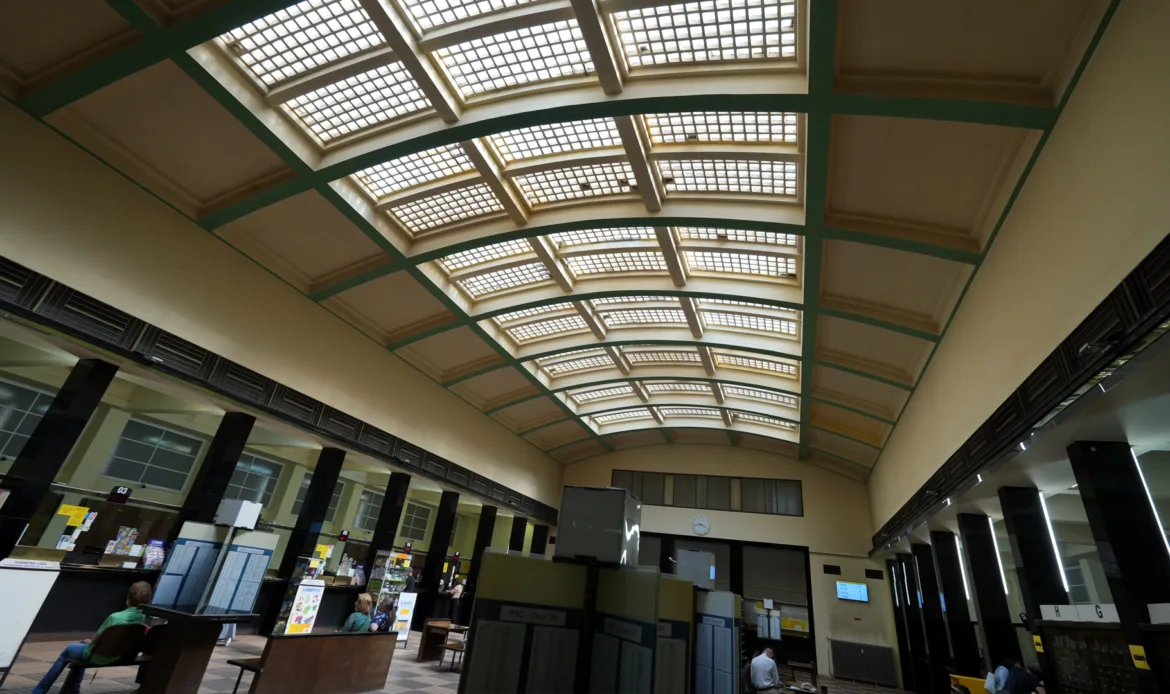
We then went to the Pub u Kohúta for late beers, this place was great, a little in the shade, located on a beautiful street and quiet inside. Delicious cuisine, nice beer & waiters are very kind. After a short time and a few beers, we went to the Camelot – Pilsner pub & Medieval restaurant, Kováčska, Old Town for more beers to finish off our pub crawl.
We returned to Stefan’s family home with some snacks for tomorrow’s flight and some top-ups for the evening. We had a Cabbage Soup, Pork Schnitzel and potatoes for dinner.
I finished some last-minute planning for the flight to Nuremberg tomorrow before relaxing for the rest of the evening for the fairly long day ahead with a 500-mile flight to Bavaria. I made sure all the cameras were ready and fully charged and the SD cards had been reset for the journey.
Final Fees for Košice Airport –
Arrived from the Czech Republic, Prague (LKPR) – Departing to Germany, Nuremberg (EDDN)
- Handling Fee – 38.00 EUR
- Parking Charge – 106.16 EUR
- Landing Fee – 32.42 EUR
- Total – 176.58 EUR (£153.85)
- JetA1 – €1.88 litre incl fees and VAT/DUTY = €107.44 for 57 litres
VLOG #2 –
Flight to Nuremberg –
After breakfast, we would freshen up and then head to the airport. I quickly made sure I was packed and everything was ready before we headed to the airport, which is a fairly short drive as explained on arrival. We wouldn’t need any customs so decided to turn up at a fairly decent time before arrival, with just enough time to prepare the paperwork, refuel the aircraft and load the baggage.
As most of the mounting for the GoPros and the oxygen bottle was fitted, this process wouldn’t take very long. As we waited for the paperwork, this had to wait before I could go out to the aircraft and check everything ready for the long flight across Eastern Europe to Germany.
Sadly whilst this happened, as time was going fast a Ryanair had landed and had to be refuelled, but this didn’t take long before the huge machine that just refuelled the Boeing 737 would come and fill us up with fuel that we would carry to Germany. Whilst I uploaded full fuel in Prague, I elected to uplift to the maximum fuel again onboard as it would be cheaper than in Germany.
Once we had completed all the paperwork, and had loaded the aircraft for departure we proceeded for an on-time departure to Germany. After doing all the checks and loading the route into the system, we departed a warm runway towards Nuremberg, with a left turn out over the city, but it wasn’t as bumpy as expected.
We continued our climb towards FL160, the first time I’ve ever climbed this high in G-ZANY – achieving this in 34 minutes after departing. Whilst the view of us being very high was impressive, in our view to our right was the High Tatra Mountains. Most of the range, and all the highest peaks, are in Slovakia.
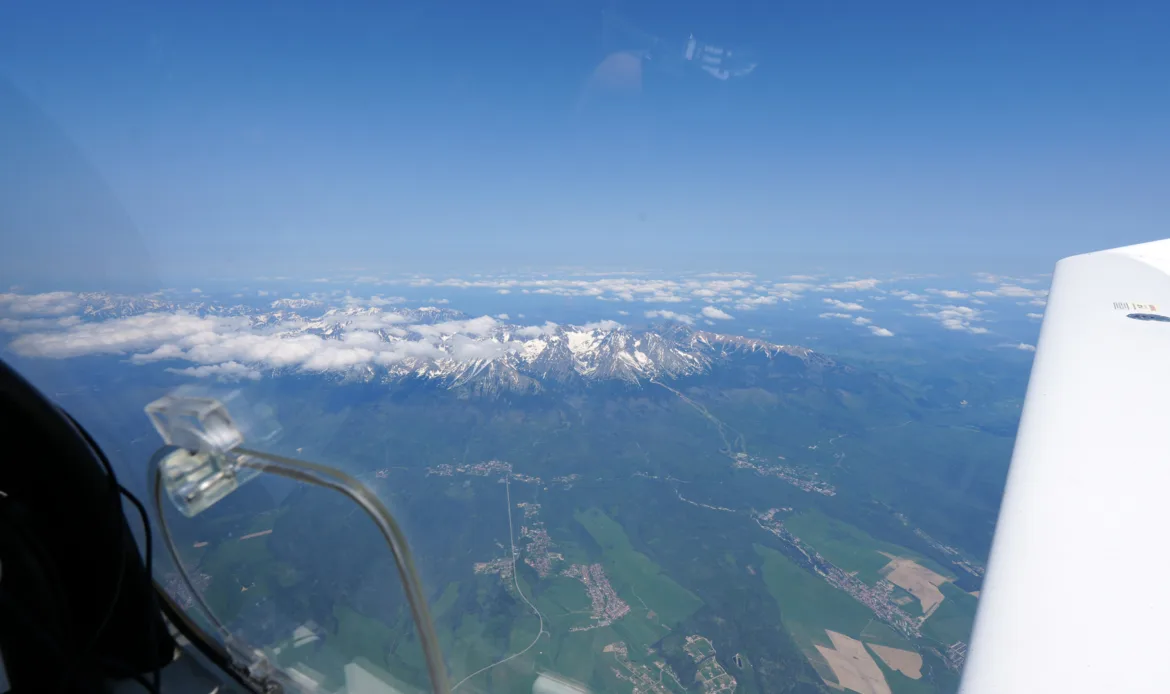
Despite flying very close to the Mountain, there was zero turbulence along its southern range and we continued our flight which was very chilled. There was nobody up here at this flight level, and the frequency remained very quiet.
As we progressed, we were quickly in sight of Prague, an amazing adventure we completed last year before ATC gave a further route direct to waypoint OKG – CHEB VOR, which is located not that far from the Czech-Germany border.
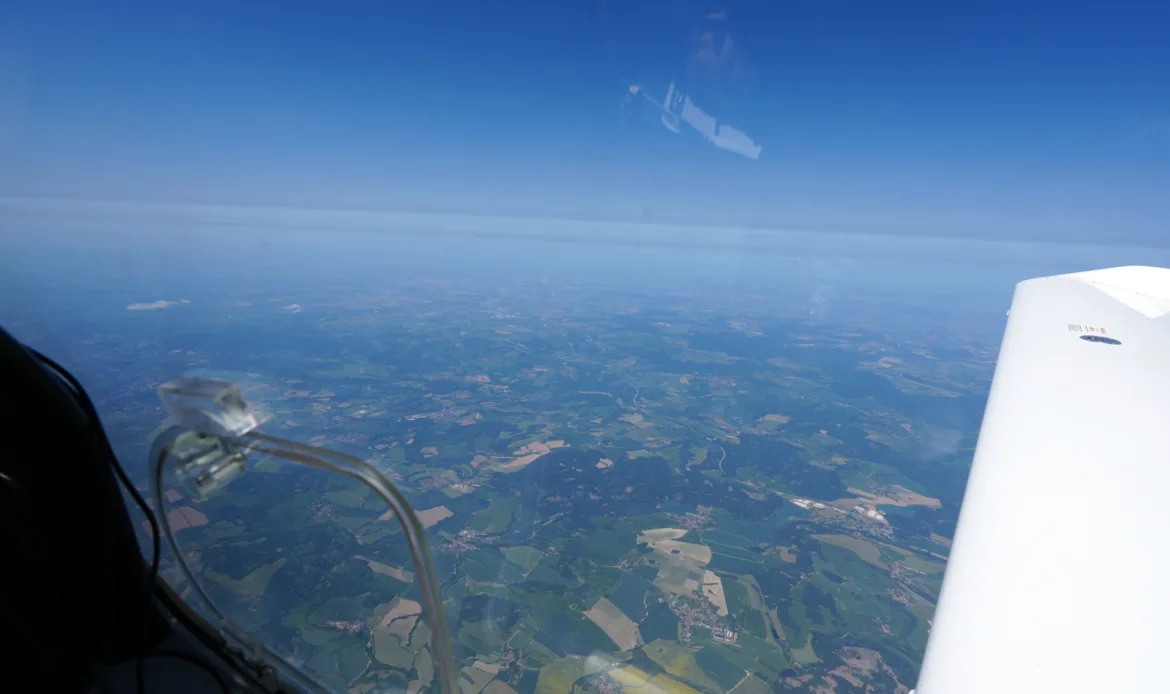
After we passed south of Prague, we were given a direct to waypoint NIBIL, associated with one of the RNAV arrivals into Nuremberg. At this point, I believe we were going to fly the whole transition, which at these very efficient German Airports is not a problem, as it reduces the arrival holding but we were cleared to one of the waypoints on the transition before a left-hand turn, then a further left-hand turn to the approach for Runway 10, the reverse of the runway we arrived and departed on last year.
The approach into Nuremberg was fairly bumpy, typical for late May heat – but it was a typical landing with the stall warner blaring but a perfectly flown approach. We vacated and had a fairly long taxi to a different part of the Aerodrome, just to the Southwestern edge of the aerodrome.
Typical German efficiency the van driver from the GAT turned up and ironically it was the same guy from last year. We told him we would need 10 minutes to tidy up before collecting us, to cover the aircraft and tidy it up.
In 7 minutes the guy was back to take us to the GAT. Into the facility, same details as last time, given details of when we planned to return and within 10-15 minutes we were on our way to Erlangen.
ATC Flight plan and route flown –
N0125F100 MARKA2A MARKA R232 PPD P27 MAKAL DCT BODAL DCT VLM DCT OKL DCT BALTU DCT OKG N869 NOGRA/N0125F110 N869 NIBIL Q244 PIVIR PIVIR1T
Filed ATC flight plan for LZKZ-EDDN
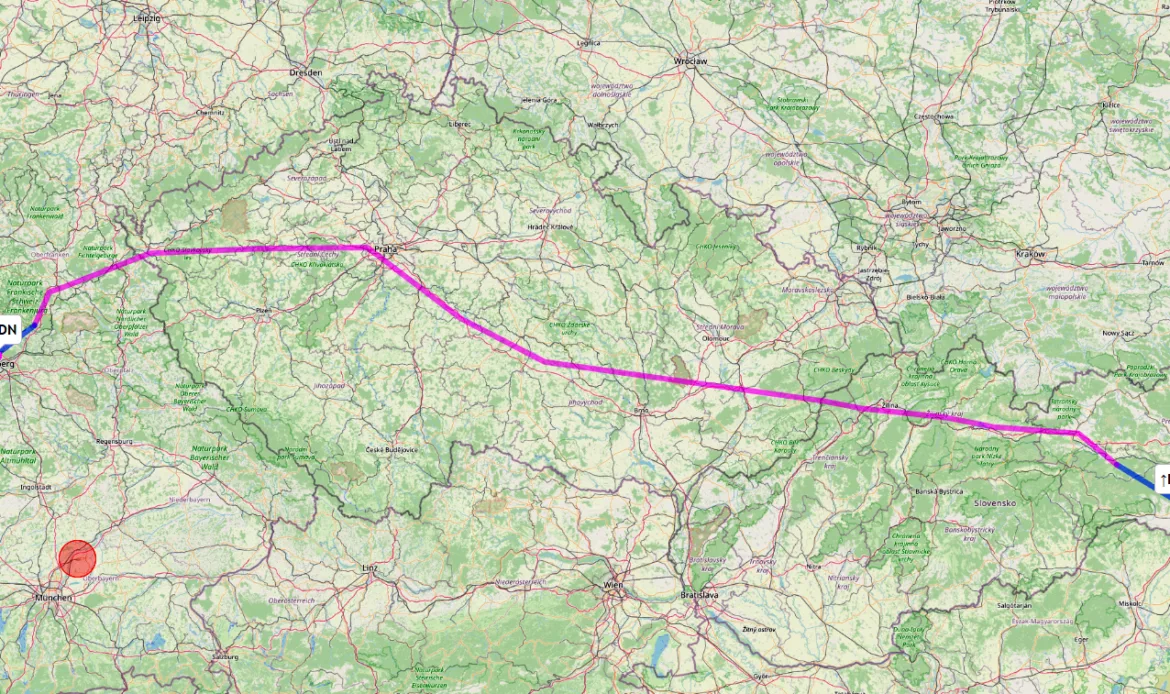
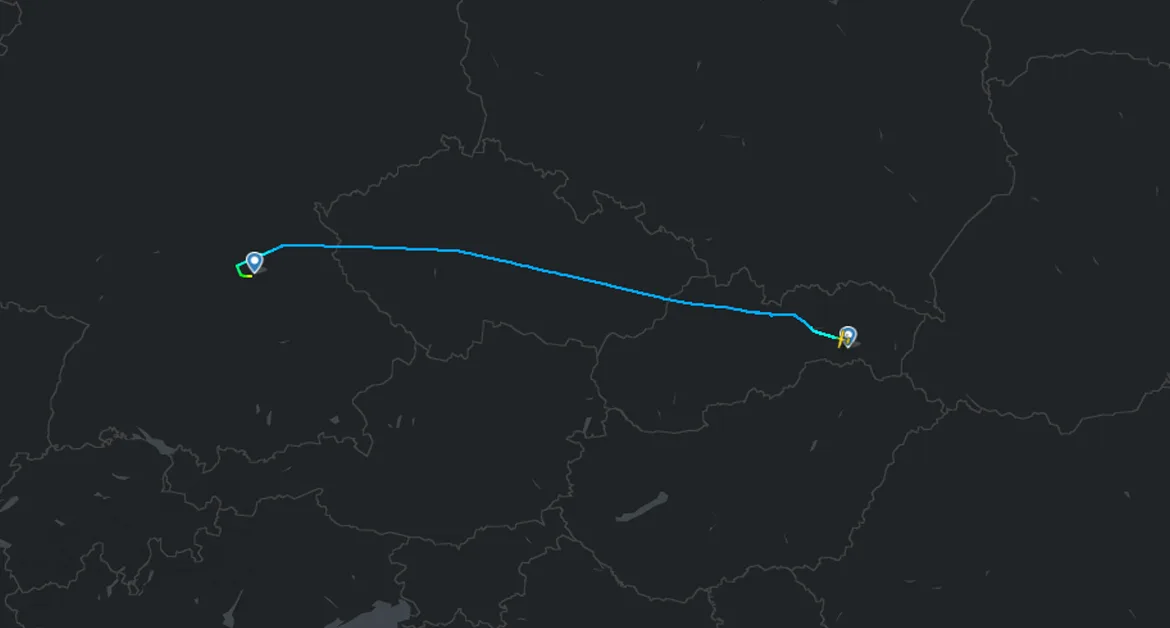
Two nights in Erlangen –
Stefan managed the accommodation for our stay once again, this time the best and most reasonably priced hotel available was the Hotel Garni König Humbert, which was €380 (£330) for two rooms for two nights. This was conveniently located in the centre of Erlangen, roughly a 25-minute walk to the Berg, situated a street from the Main Street that leads to the venue.
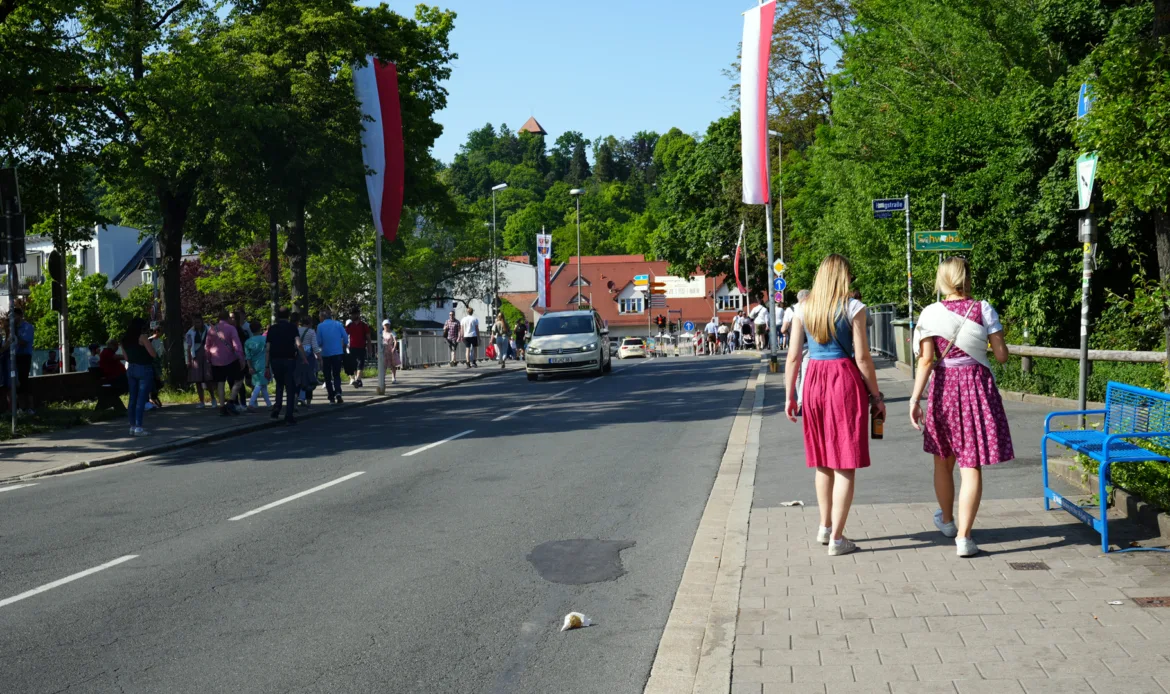
We arrived back at our hotel, then proceeded to unpack, relax and get ready for the evening ahead. We were set to go to the Berg and meet Oliver (A fellow friend of Stefan’s) for food and some beers. We walked down the main street, met Oliver and then proceeded to the Berg where we found a place to eat.
We ordered traditional Curry Wurst with Frittes, along with our first stein. We proceeded to walk down the Berg towards the far end where there is usually some live music and people dancing on benches.
The Erlangen Bergkirchweih attracts around one million visitors every year and transforms the area around the castle hill into a cheerful get-together with music, beer, dance, fun and games. With its charm and atmosphere, it enchants young and old, from near and far. Sadly, the last two years had been cancelled, but this year it went ahead and on this final weekend, it was busy.
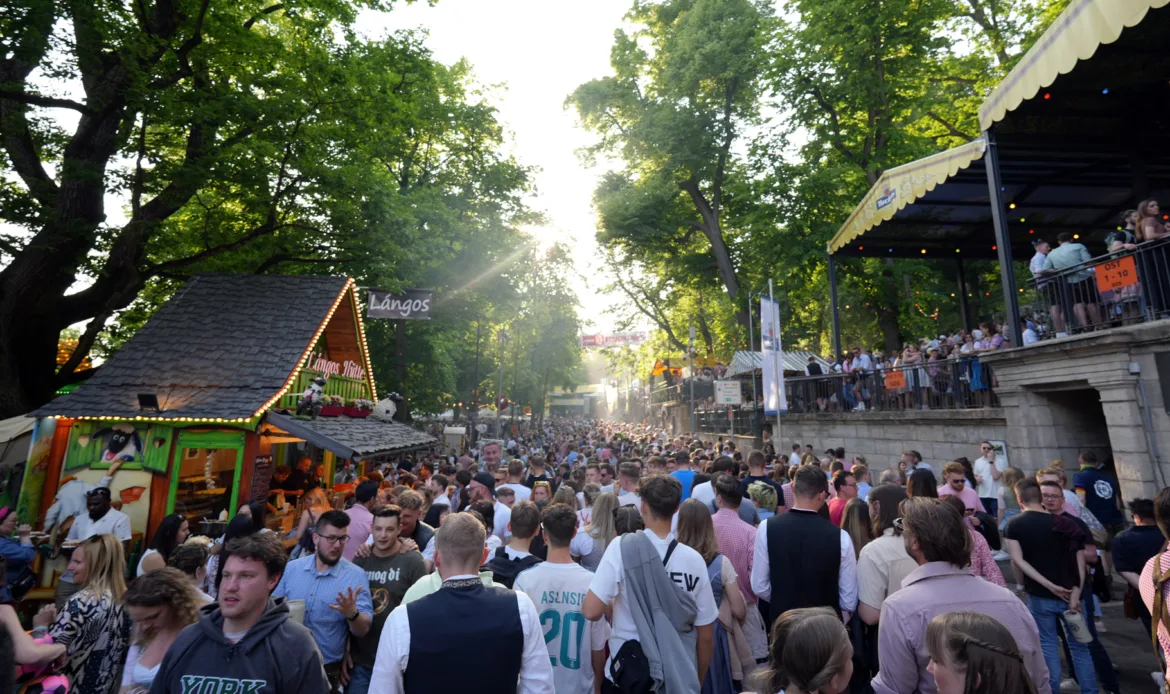
Erlangen dates back to 1002, but this festival commemorates the birthday of the market square. It is one of the oldest festivals in Germany. Each year is a different design for the litre beer mugs. You pay a 5 EURO deposit and you either give the mug back for the deposit or take it home, as it makes a great souvenir, this year was a different design – in the mix were some designs from the ’90s and 2000s.
After 3 Steins and for me to change quickly, I walked back to the hotel and met the gents at Cafe Mengin, where they had some food whilst I was getting changed. I quickly went to McDonalds as this was a far quicker option for me and we then went to E-Werk for a night out.
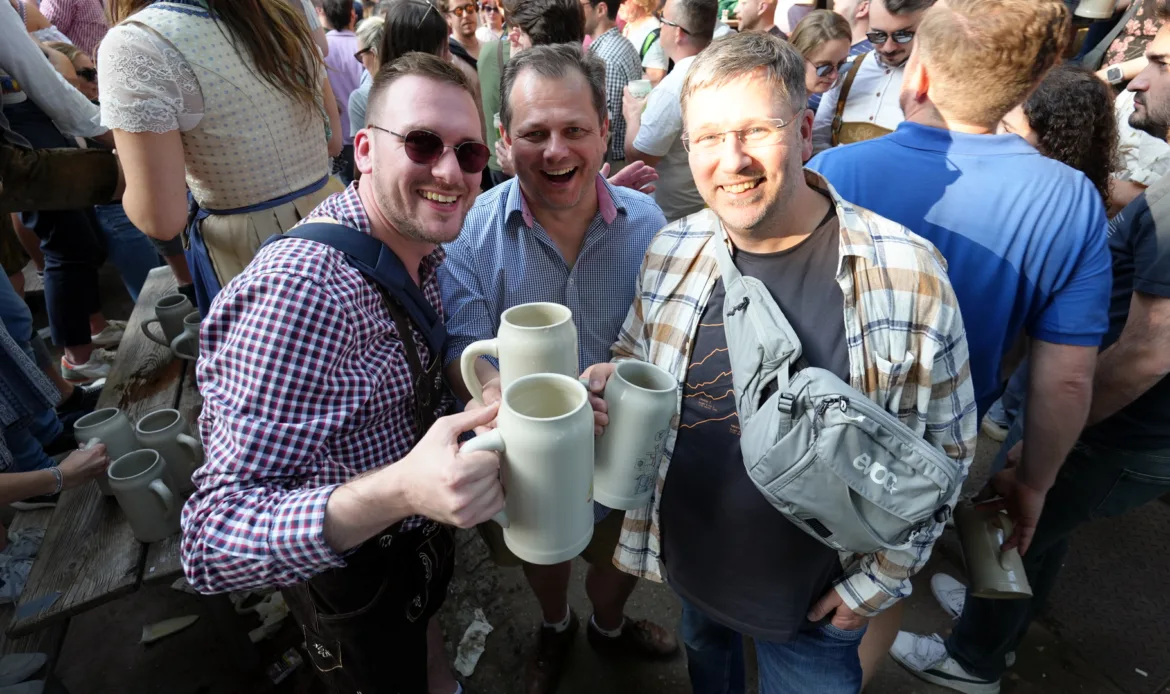
The next day we woke up, and walked to the BRASSERIE Erlangen, a short walk from our hotel to sober up from our hangover. You can have a leisurely breakfast here, or lunch and even an after-work elaborate dinner – but most of all, it’s a short walk from the town centre.
We walked back to the berg, mostly to have Radler, a half beer and half lemonade cocktail to keep us going till the evening. Where then decided it was time to head back towards the hotel with a stop for some Pizza. We ventured to L’Osteria located to the right of Regnitz, between Bahnhof, Universität, Schlossgarten and numerous shopping areas in the city centre.
After this, we both elected to get an early night as we had a very long weekend and had a very long direct flight back to the UK the next day, the heat was somewhat exhausting and drinking at Erlangen is a challenge, especially when the weather is warm.
The next morning we both woke up for some Breakfast as planned and visited Café Mengin which we visited last year for some lunch. Whilst the breakfast was amazing, it was a shame they didn’t have the same offering from last year, a much-needed Thai with lots of nutrition. I had looked the other day and it appeared that they had changed the menu from what we had in 2022.
As we had packed the night before and final touches in the early morning, we went from Breakfast to taxi and straight to the airport to prepare the aircraft for the long flight back to the UK.
Final Fees for Nuremberg Airport –
Arrived from Kosice, Slovakia (LZKZ) – Departing to the United Kingdom, Stapleford Aerodrome (EGSG)
- Take-Off Charge – 8.99 EUR
- Parking Charge – 19.84 (8.92 a day) EUR
- GAT Basic Fee – 19,84
- Emission Charge – 1,00 EUR
- Total – 56,73 EUR (£49.43)
- JetA1 – £2.76 a litre incl fees and VAT/DUTY = £303.76 for 111 litres
Flight to the UK –
We arrived at the airport with plenty of time, arranged a lift to book out with customs and ordered some Jet A1 fuel. Unlike most sectors of this trip, the briefing for our take-off and departure and route was done landside in the GAT terminal – which is going forward the most preferential way, especially with passengers, those not so seasoned with GA flying.
A member of the team at the GAT was organising our paperwork for payment before we went to the main terminal building to clear our passports for the direct flight to the UK so I could stamp myself out of the EU Schengen region.
We then headed to the aircraft, quickly refuelled and prepared our bags for the final boarding of this momentous trip. We did have a pause of reflection as Stefan supervised the refuel and I happily moved around the aircraft to ensure it didn’t receive any dings or parts had fallen off before we conducted the almost 500 mile flight back to the United Kingdom.
We got our clearance, IFR to Stapleford then once we had completed all checks of the aircraft and set up the navigators for the flight to the UK, we requested taxi. Like our landing on Saturday, we would use the easterly facing Runway, 10.
We watched a Lauda Air land and a Ryanair depart ahead of us after we had completed our power checks, behind this Ryanair of course was a fairly lengthy delay due to wake turbulence. Being a hot late Spring day, and at the peak of heating it was likely to be very bumpy on departure and as we came over the Forest, we got some good climb rates, but not as turbulent as last year – fairly smooth but lots of thermals.
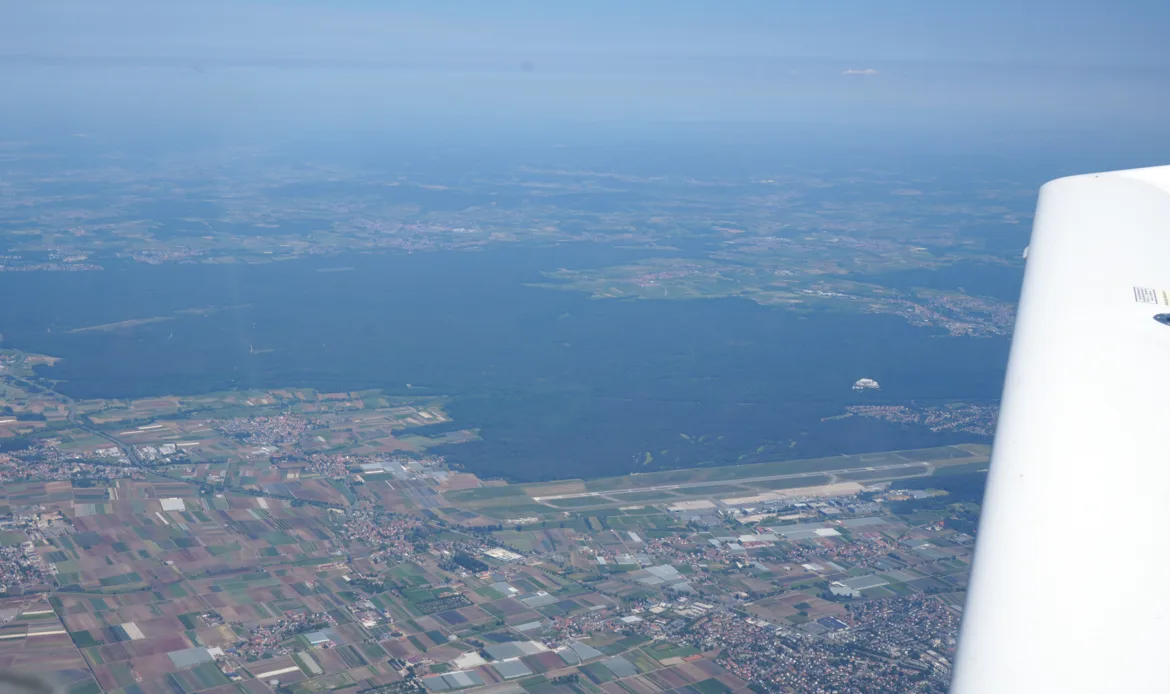
The SID appears to take you around Nuremberg before taking you to the north and then onto the airways systems. Once we passed a certain level, ATC gave us a route direct or shortcut before giving us further climb.
We seem to have been stuck at a certain level or two before Munich wouldn’t climb us any further and handed us over to Langen Radar, before we were given our final cruise of FL160.
We then had a few shortcuts given to us, mostly taking us away from our routing and reducing track miles so that our ETA to London was better and better. We were then treated to another fantastic view of one of Europe’s busiest airports, Frankfurt Main.
Shortly after, a Boeing 747 was given a stop climb and he came very close below our level out of Frankfurt Hahn. Once we were clear of Frankfurt, we were pretty much given direct to somewhere near the UK FIR boundary.
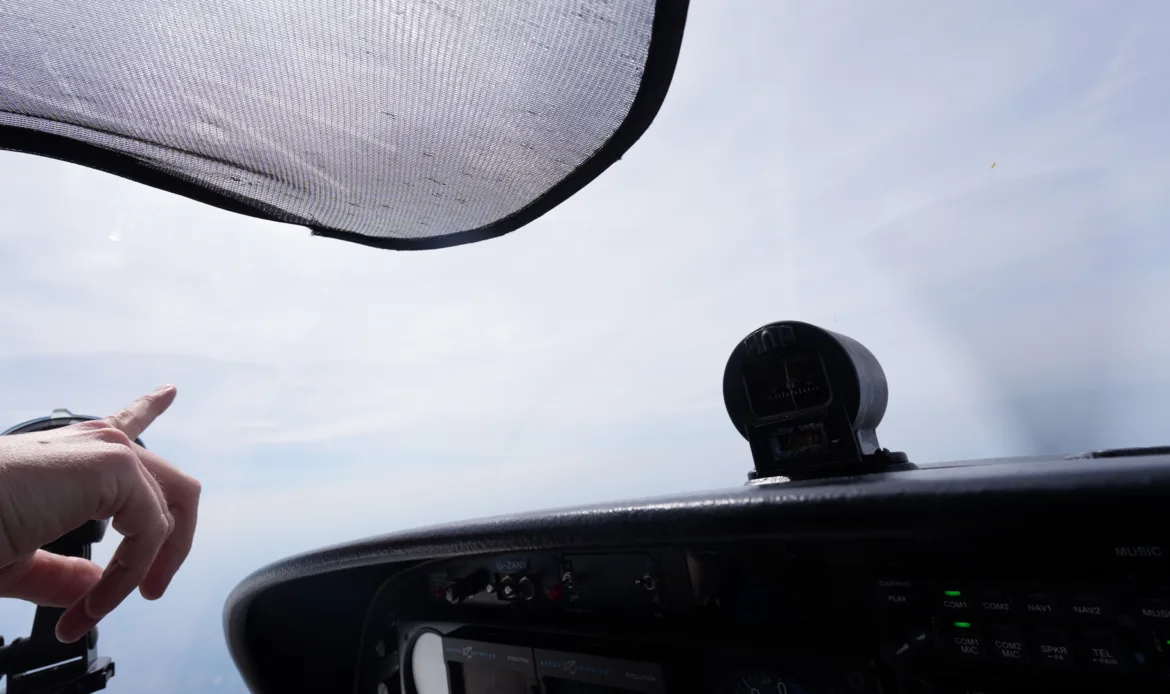
Flying south of Brussels, a regular sight on these outings to Germany. It looks awfully small at 16,000ft – but views like this make you appreciate much more how amazing flying is and how much of a talent I have to experience these ventures and travel and wanderlust the way I do.
Well before the FIR boundary, Brussels started us in a descent at the request of London ATC – down to FL100 and then routing into the London TMA towards DVR and DET VORs, but it wasn’t long after that, that ATC gave us a direct to Stapleford and continued our descent keeping us in the London TMA till almost 10 miles from Stapleford.
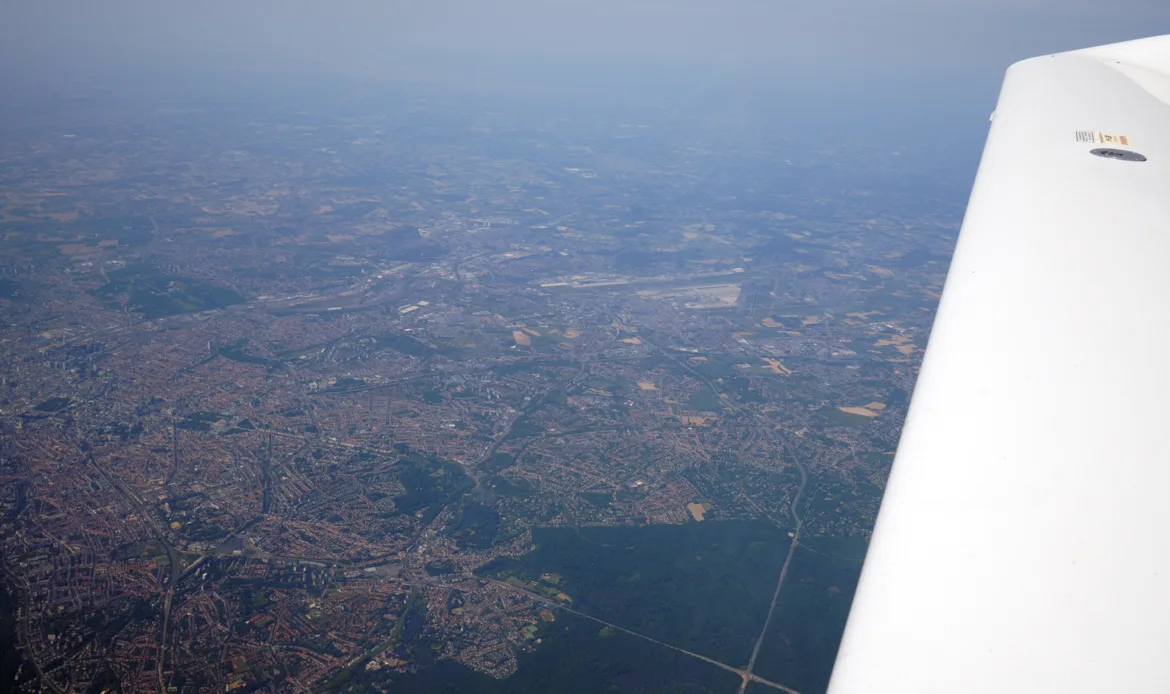
We made the overhead join, completed the noise-abatement procedure and landed on runway 03L, 4 days after we had left – completing almost 2,000 miles and visiting 3 different international airports across 3 countries in 5 days.
ATC Flight plan and route flown –
N0131F160 SUKAD1G SUKAD T159 OLALI Y165 EDUDU Y101 OSBIT L984 BOMBI Z75 NOKDI Z104 OLGIL Z656 IDOVI Z104 AGBUL/N0129F120 Z104 LULAT/N0127F110 Z104 TIPUT DCT GIREL DCT ONC DCT AKOVI DCT KOK/N0126F100 DCT
Filed ATC flight plan for EDDN-EGSG
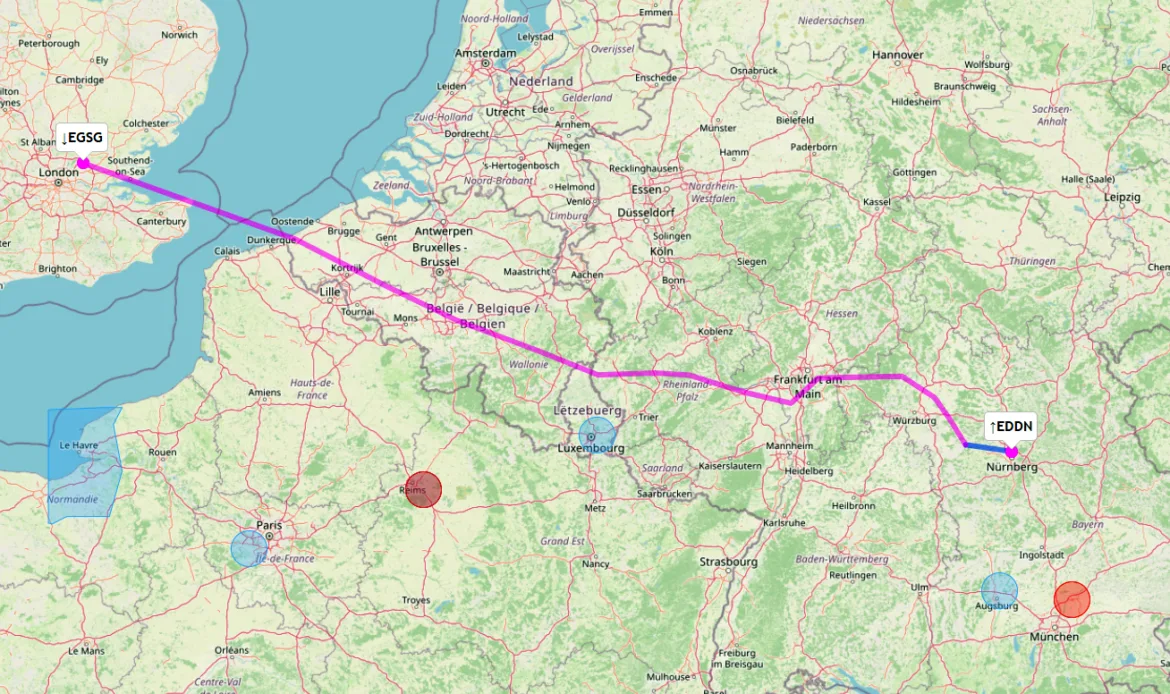
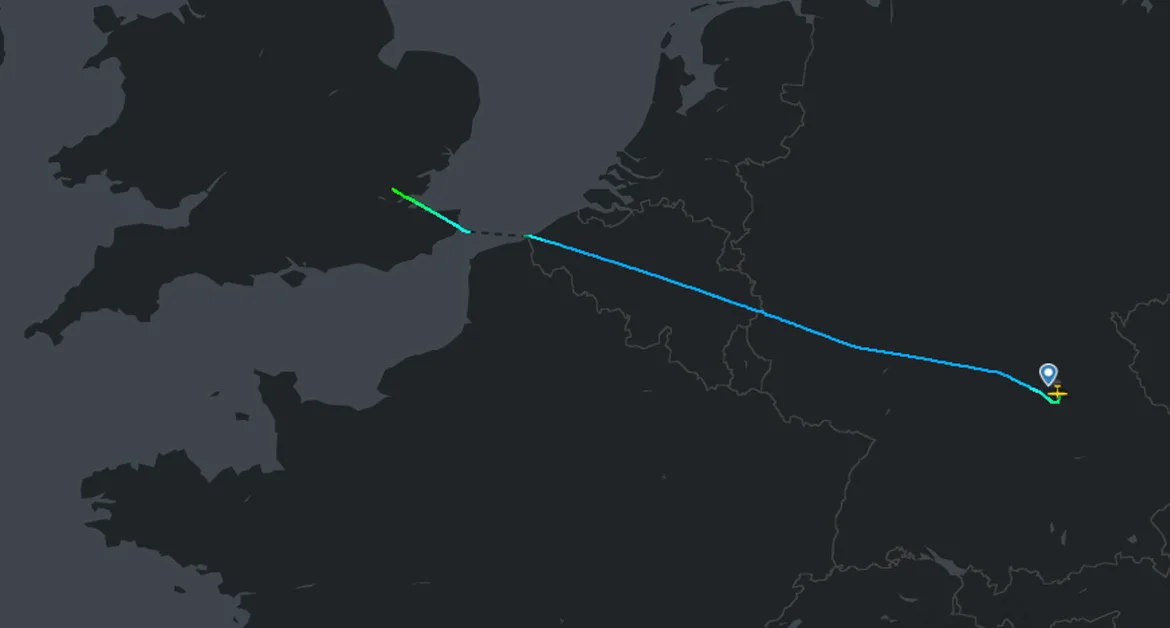
Outcome & Costs –
One of the most adventurous trips I’ve done to date, flying to the far eastern border of Europe, near the edge of a war zone. Flying across Slovakia’s mostly mountainous territory and revisiting a favourite location, Erlangen for the berg. This trip was a memorable experience and many miles were flown, and it was great to complete the furthest distance I’d ever flown.
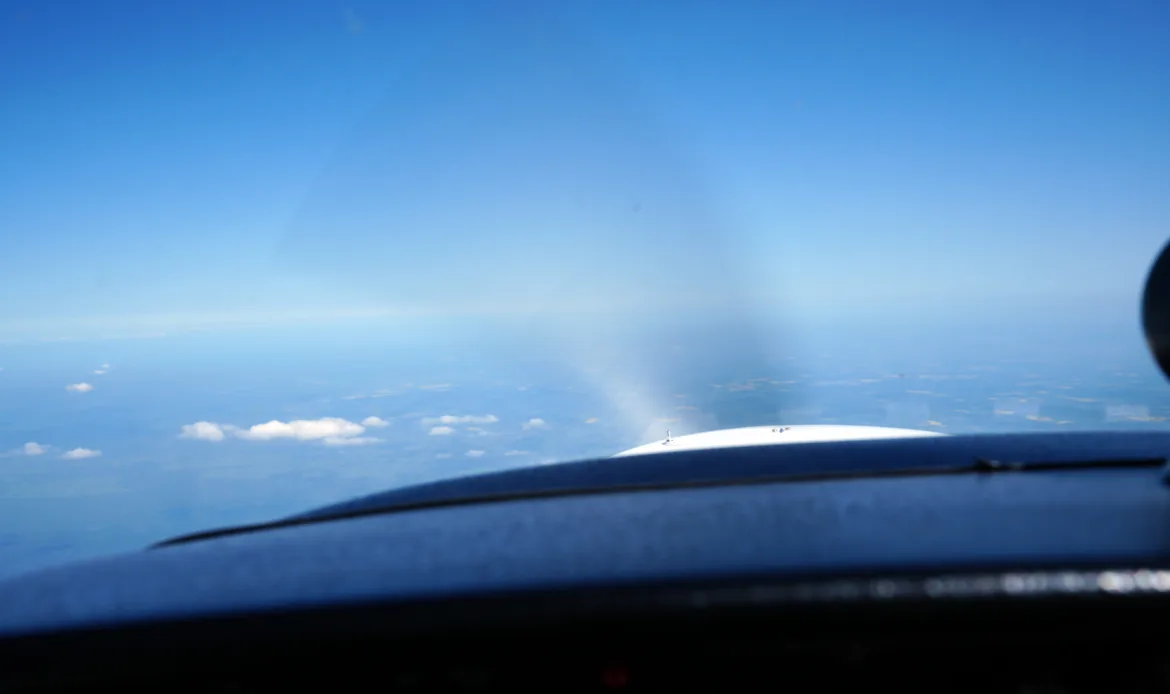
This trip gave me the overview effect – the appreciation and perception of beauty, unexpected and even overwhelming emotion, and an increased sense of connection to other people and the Earth as a whole. This was just the start of a big flying year using my Instrument Rating, and this was just the start.
Prague Airport Costs –
Airport Costs: £140.08
Jet A1 Uplift: 4,641.98 CZK (£170.87 (113 Litres) @£1.51ltr
Sub-Total: £310.95
Košice Costs –
Food, Drink & Leisure Costs: £70.44
Airport Costs: £153.85
Jet A1 Uplift: €107.44 (£93.61 (57 Litres)) @£1.88 ltr
Sub-Total: £247.46
Erlangen Costs –
Food & Drink Costs: £179.82
Taxi to Airport: £44.35
Hotel Costs: £330.00 (£165.00 each room)
Taxi from Nuremberg Airport: 50 EUR Approx
Airport Costs: £49.43
Jet A1 Uplift: £184.75 (82 Litres)) @£1.62 ltr
Sub-Total: £623.35
Flying Costs –
Aircraft Charges: £2,759.64 (@ £183 per hour (15 hours 05 minutes flown))
DFS Navigation Charge (Germany AIS): £25.00
Airport Fees: £343.36 (As above)
JetA1: (Wet Rate drawback) Credited £264.60 (-) (GZANY) (252 litres at EGSG rate)
Total Cost –
Total Costs (Non-Aviation): £459.61
Total Costs (Aviation): £3128.00
Total Costs (All): £3587.61
Version 1.2 – Last Updated 15/01/24
Aircraft –
The aircraft is a DA40 TDI, which uses a Thielert “Centurion” 135 hp (101 kW) diesel engine and burns diesel or jet fuel. It has a constant-speed propeller and FADEC (single lever) engine control. G-ZANY is based at Stapleford Aerodrome, Essex, UK and was delivered as new in 2003.
Read more about the aircraft on the dedicated page
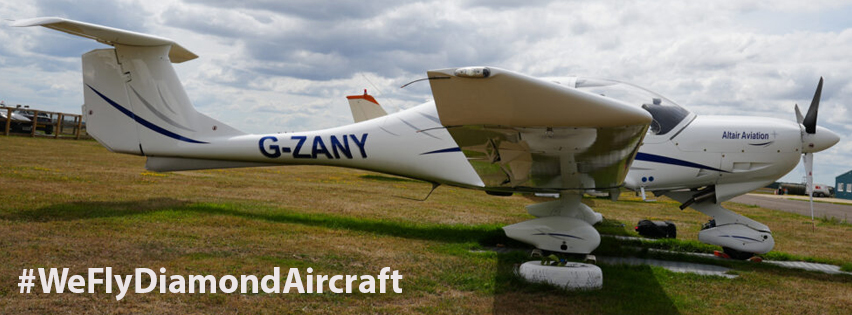
Supporting the YouTube Channel –

Support the YouTube Channel –
Welcome to The FLYING VLOG…
I am a current PPL(A), SEP (LAND), IR(A) SE/SP PBN, IR(R) & Night holder. Flying the world, exploring its hidden treasures. Taking pictures and vlogging the journey; I hope I can provide you with an oversight of my progression as I develop my skillset and airmanship in exclusive videos on my YouTube channel.
Now flying IFR in the Airways of Europe & beyond. Bringing you an exclusive niche to YouTube, flying in the same skies with commercial airliners.

